

Tourism Industry in Germany

The tourism industry in Germany plays a significant role in the country’s economy , and with good reason. Visitors are drawn to Germany’s diverse range of attractions, from its rich cultural heritage to its stunning natural landscapes. As one of the most visited countries in Europe, Germany boasts a wealth of top tourist destinations that are popular with both domestic and international visitors.
In this article, we will explore the various facets of Germany’s tourism industry. From the top tourist destinations to the government’s role in supporting the industry, we will cover it all. We will also provide information on entry-level jobs, apprenticeships , and academic programs available to those interested in pursuing a career in the industry.
Whether you are a tourist planning a trip to Germany or a professional looking to enter the tourism industry, this article will provide valuable insights into the inner workings of one of the most dynamic and vibrant industries in the world.
Germany’s Top Tourist Destinations
Germany is home to some of the most beautiful and historic tourist destinations in the world. From stunning natural landscapes to captivating cultural landmarks, there is something for everyone in this fascinating country.
Berlin is the bustling capital city of Germany and is a must-see destination for history lovers. Visitors can explore the iconic Berlin Wall, visit the famous Brandenburg Gate, and learn about the city’s complex history at the Berlin Wall Memorial and Checkpoint Charlie Museum. The city is also renowned for its vibrant nightlife and cultural scene, with numerous galleries, museums, and theaters to explore.
Munich is the heart of Bavaria and is known for its stunning architecture, rich culture, and world-famous Oktoberfest celebrations. Visitors can explore the historic Marienplatz square, visit the grand Nymphenburg Palace, and take a stroll through the tranquil English Garden. The city is also renowned for its delicious cuisine, with plenty of traditional beer halls and restaurants serving up local specialties.
3. The Black Forest
The Black Forest is a stunning mountain range located in southwest Germany, renowned for its picturesque scenery, charming villages , and plentiful outdoor activities. Visitors can hike through the forest, take a scenic drive along the Black Forest High Road, and explore the region’s many historic castles and museums.
4. The Romantic Road
The Romantic Road is a famous tourist route that winds through southern Germany, connecting picturesque towns and villages filled with historic architecture and cultural attractions. Visitors can explore the stunning Neuschwanstein Castle, take a stroll through the charming town of Rothenburg ob der Tauber, and soak up the stunning countryside scenery along the way.
5. The Rhine Valley
The Rhine Valley is a UNESCO World Heritage site and is renowned for its stunning natural beauty, charming riverside towns, and world-famous castles. Visitors can take a relaxing boat trip down the Rhine River, explore the historic town of Rüdesheim, and visit the stunning medieval castle of Burg Eltz.
Tourism in Germany: Test your knowledge
Welcome to our quiz on the topic of 'Tourism in Germany'! Discover how well you know about the attractions, hospitality, and tourism trends in this beautiful country. Are you ready for an exciting journey through Germany's tourism industry? Start now!
The History of Tourism in Germany
The history of tourism in Germany can be traced back to the 19th century, when wealthy Europeans began to visit the country for its natural beauty, spas, and cultural attractions.
The introduction of the rail system in the mid-1800s made travel to Germany more accessible, and the opening of the first German tourist office in 1902 marked the beginning of organized tourism in the country.
During the Nazi regime, tourism in Germany was used as a tool for propaganda, with many visitors coming to witness military parades and other displays of power.
After World War II, the German government worked to rebuild the tourism industry, promoting the country’s natural beauty and cultural heritage to international visitors.
Post-War Developments
In the decades that followed, the German tourism industry continued to grow, with the construction of new hotels and attractions and the expansion of transportation networks.
In the 1970s and 80s, Germany became a popular destination for cultural tourism, with visitors coming to experience the country’s rich history and artistic traditions.
Today, the tourism industry is a vital part of the German economy, with millions of visitors coming each year to explore the country’s diverse offerings.
The Role of Government in Supporting Tourism in Germany
The German government plays a significant role in supporting and promoting the tourism industry in the country. The government’s efforts are aimed at attracting visitors from all over the world and increasing the tourism market in Germany.
Promotion of Germany as a Tourist Destination
The government actively promotes Germany as a tourist destination through various campaigns and initiatives. One such initiative is the “Destination Germany” campaign, which aims to showcase Germany’s diverse attractions and encourage people to visit the country. The government also partners with travel agencies and tour operators to promote Germany as a destination.
Investment in Infrastructure
The German government invests heavily in infrastructure development to support the tourism industry. This includes the improvement of transportation, such as modernizing airports and expanding public transportation, as well as the construction of new tourist attractions and amenities.
Financial Support for Small Businesses
The government provides financial support for small businesses in the tourism industry through various programs and grants. This support helps small businesses improve their services and facilities, making Germany a more appealing destination for tourists.
Policies and Regulations
The German government has implemented policies and regulations to ensure the sustainability and quality of the tourism industry. This includes regulations on the number of visitors allowed at certain attractions, as well as policies on environmental sustainability and cultural preservation.
Facts and figures
- Germany attracts over 48 million overnight visitors each year.
- The tourism industry accounts for 4.4% of Germany's GDP.
- Berlin is the most visited city in Germany.
- The number of international tourists visiting Germany has been increasing steadily over the years.
- The most popular tourist destinations in Germany include Munich, Hamburg, and Cologne.
- Germany has over 6,000 museums, making it a cultural hub for tourists.
Tourist Attractions in Germany
Germany boasts a diverse range of tourist attractions, from historical sites to natural wonders and cultural landmarks. Here are some of the top attractions that draw visitors from around the world:
Neuschwanstein Castle
One of the most iconic castles in Europe, Neuschwanstein Castle is located in the Bavarian Alps and was built by King Ludwig II in the 19th century. The castle served as the inspiration for Disney’s Sleeping Beauty Castle and its stunning location makes it a must-see for visitors to Germany.
The Brandenburg Gate
One of Germany’s most famous landmarks, the Brandenburg Gate is a symbol of the country’s reunification and is located in the heart of Berlin. Visitors can take in the stunning architecture and learn about the history of this iconic monument.
The Black Forest
The Black Forest is a mountainous region in southwestern Germany that’s famous for its dense forests, waterfalls, and scenic vistas. Visitors can hike, bike, or take a scenic drive through this stunning region.
The Cologne Cathedral
The Cologne Cathedral is one of the largest Gothic cathedrals in Europe and is located in the heart of Cologne. Visitors can take a guided tour to learn about the history and architecture of this stunning monument.
The Romantic Road
The Romantic Road is a picturesque route that winds through quaint little towns and medieval villages in southern Germany. Visitors can take in stunning views of the countryside and explore the charming culture of this region.
The Zugspitze
The Zugspitze is the highest mountain in Germany and offers stunning views of the surrounding landscape. Visitors can ride a cable car to the top and take in the breathtaking scenery.
The Berlin Wall
The Berlin Wall is a symbol of the Cold War and the division between East and West Germany. Visitors can explore the remnants of the wall and learn about the history of this iconic structure.
Sanssouci Palace
Sanssouci Palace is an exquisite example of rococo architecture and is located in Potsdam , just outside of Berlin. Visitors can take a guided tour of the palace and its beautiful gardens.
The Rhine River
The Rhine River is one of the most scenic rivers in Europe and runs through Germany’s picturesque wine country. Visitors can take a river cruise or explore the charming towns and villages along its banks.
Germany’s Cultural Heritage
Germany is a country with a rich cultural heritage, which has made it a popular destination for tourists from all over the world. From its art, literature, and music to its food and drink, Germany is a country that has much to offer to those interested in exploring its culture.
Germany has a long tradition of producing great artists, and many of the world’s most famous artists have called Germany home. From Renaissance masters like Albrecht Dürer and Hans Holbein the Younger to modern artists like Gerhard Richter and Anselm Kiefer, Germany has a rich artistic tradition that continues to this day.
Germany has a long and distinguished literary tradition, and its writers have made significant contributions to world literature. From the fairy tales of the Brothers Grimm to the works of Johann Wolfgang von Goethe and Thomas Mann, German literature has had a profound influence on the world of letters.
Germany is also known for its rich musical heritage, which has produced some of the world’s greatest composers. From Johann Sebastian Bach and Ludwig van Beethoven to Richard Wagner and Johann Strauss II, German music has had a profound impact on the world of classical music.
German cuisine is another important aspect of the country’s cultural heritage. From hearty stews and sausages to delicate pastries and cakes, German cuisine offers a wide range of flavors and dishes to satisfy any palate.
Overall, Germany’s cultural heritage is a significant part of what makes the country such a popular destination for tourists. Whether you are interested in art, literature, music, or food, Germany has something to offer to visitors of all tastes and interests.
Germany’s Natural Beauty
Germany is renowned for its beautiful landscapes, including both natural and man-made attractions that attract visitors from around the world.
The Black Forest, or Schwarzwald, is a mountainous region in southwest Germany known for its dense, evergreen forests and picturesque villages. The area is popular for hiking, skiing, and spa retreats, and is home to the iconic cuckoo clocks that the region is famous for.
The German Alps are a stunning range of mountains that stretch along the southern border between Germany and Austria . Visitors can enjoy skiing, hiking, and mountain biking, and experience the unique culture of the Bavarian region, including traditional dress, folk music, and hearty cuisine.
The Rhine River is one of Europe’s most important waterways, flowing through Germany, Switzerland , and the Netherlands. Along its banks, visitors can explore historic towns and castles, take river cruises, and enjoy the scenic beauty of the surrounding countryside.
The Wadden Sea
The Wadden Sea is a UNESCO World Heritage Site that stretches along the North Sea coast of Germany, the Netherlands, and Denmark. It is home to a unique ecosystem that supports a variety of wildlife, including migratory birds and seals, and visitors can explore the area on foot or by boat.
The Romantic Road is a scenic route that winds through the Bavarian region of Germany, passing through charming medieval towns and picturesque countryside. Visitors can explore historic landmarks, taste delicious local cuisine, and experience the area’s unique culture and traditions.
The German government plays a significant role in promoting and supporting the tourism industry in the country. Its policies and initiatives aim to attract visitors and boost the tourism market in Germany. Some of the ways the government supports the tourism industry include:
In addition to these policies and initiatives, the German government also provides funding and support for tourism infrastructure, including transportation and accommodation. The government recognizes the importance of the tourism industry for the country’s economy, and is committed to helping it thrive.
Tourism Statistics in Germany
The tourism industry is a significant contributor to the German economy. In 2019, Germany welcomed over 90 million international and domestic visitors, who spent a total of 293 billion euros. The industry also generates over 3 million jobs in the country.
The COVID-19 pandemic had a significant impact on the tourism industry in Germany, as it did worldwide. In 2020, the number of visitors to Germany decreased by 61% compared to the previous year, and spending decreased by 63%. However, the German government has implemented measures to support the industry during this challenging time, such as financial aid for tourism businesses and campaigns to promote domestic tourism.
Despite the challenges posed by the COVID-19 pandemic, the German tourism industry remains resilient and is expected to recover. The industry’s long-term prospects remain positive, and the government’s commitment to supporting it bodes well for its future growth.
Entry-Level Jobs in the Tourism Industry
There are a variety of entry-level jobs available in the tourism industry in Germany. These positions provide an opportunity to gain valuable experience and start building a career in the industry.
Some common entry-level jobs in the tourism industry include:
- Hotel Receptionist
- Travel Agent
- Event Coordinator
- Restaurant Server
Many of these positions require strong communication and customer service skills , as well as a love for travel and an interest in the tourism industry. Some may also require foreign language proficiency, such as fluency in English or other commonly spoken languages.
Entry-level jobs in the tourism industry can provide a stepping stone to more advanced positions and management roles. They offer the opportunity to gain experience in a variety of areas, including customer service, marketing , and event planning.
Requirements for Entry-Level Jobs in the Tourism Industry
The requirements for entry-level jobs in the tourism industry may vary depending on the specific position and employer. However, some common requirements include:
Additionally, some entry-level positions in the tourism industry may require specific education or certifications. For example, tour guides may need to complete a training program or obtain a license in order to provide tours in certain areas.
Apprenticeships in the Tourism Industry
Apprenticeships are a highly valued component of Germany’s education system, and they play an important role in training individuals for careers in various industries, including tourism. For those interested in pursuing a career in the tourism industry, apprenticeships can provide valuable on-the-job training and experience.
Benefits of Apprenticeships
Apprenticeships offer numerous benefits to both employers and apprentices. For employers, apprenticeships provide an opportunity to train individuals to meet their specific needs and requirements. For apprentices, apprenticeships offer a chance to gain valuable skills and experience while earning a salary .
In addition to on-the-job training, apprenticeships may also include classroom instruction. This combination of hands-on learning and classroom education is known as dual vocational training .
Apprenticeship Programs in the Tourism Industry
There are numerous apprenticeship programs available for individuals interested in pursuing a career in the tourism industry. These programs generally last two to three years and include both on-the-job training and classroom instruction.
Requirements for Apprenticeships
The requirements for apprenticeships in the tourism industry may vary depending on the program and the employer. However, most programs require applicants to have completed at least a secondary school education and to have a strong interest in the tourism and hospitality industry.
Additionally, apprenticeships may require applicants to have certain skills or abilities, such as foreign language proficiency, customer service skills, or a willingness to work flexible schedules.
Career Paths for Apprenticeship Graduates
Upon completion of an apprenticeship program in the tourism industry, graduates may pursue a variety of career paths. Some may choose to continue working for their apprenticeship employer , while others may seek employment with other tourism-related businesses.
Career paths may include positions such as hotel manager, tour guide, event planner, or restaurant owner. With additional education and experience, apprenticeship graduates may also pursue leadership positions within the tourism industry.
Dual Studies in the Tourism Industry
Dual studies programs offer a unique opportunity for students to combine academic study with practical experience in the tourism industry. These programs typically involve a combination of classroom learning and on-the-job training, allowing students to develop both theoretical knowledge and practical skills.
Benefits of Dual Studies
There are many benefits to pursuing a dual studies program in the tourism industry. For one, students gain valuable work experience that can help set them apart from other job candidates after graduation. Additionally, dual studies programs often allow students to develop a network of industry contacts, which can be helpful in securing job opportunities later on.
Another advantage of dual studies is that students can apply what they learn in the classroom to real-world situations, deepening their understanding of theoretical concepts and gaining practical skills that can be applied in a range of settings. Finally, dual studies programs often include the opportunity to earn a salary while studying, which can help offset the cost of tuition and living expenses.
Dual Studies Programs in Germany
There are a wide range of dual studies programs available in Germany for students interested in pursuing a career in the tourism industry. Some of the top programs include:
These programs offer a range of specializations, including event management, hospitality, and tourism marketing. Students interested in pursuing a dual studies program should speak with an academic advisor to learn more about available options and determine which program is the best fit for their interests and career goals.
Studying Tourism in Germany
If you’re interested in pursuing a career in the tourism industry in Germany, there are various academic programs available to help you gain the necessary knowledge and skills. Here’s an overview of some of the options:
Bachelor’s Degree Programs
Many universities in Germany offer bachelor’s degree programs in tourism management, which typically take three to four years to complete. Some programs may also include opportunities for internships or study abroad experiences. Examples of universities that offer tourism management programs in Germany include:
Master’s Degree Programs
For those looking to further their education, there are also numerous master’s degree programs in tourism management available in Germany. These programs typically take two years to complete and may require applicants to have a bachelor’s degree in a related field. Examples of universities that offer tourism management master’s programs in Germany include:
Specialized Schools
In addition to universities, there are also specialized schools that offer programs in tourism and hospitality management. These programs may be shorter in duration than traditional bachelor’s or master’s degree programs and may focus on practical skills and experiences. Examples of specialized schools in Germany include:
- International School of Management (ISM) – offers bachelor’s and master’s programs in tourism and hospitality management
- European Travel College (ETC) – offers a one-year diploma program in international tourism management
- Hotelfachschule Berlin – offers a two-year program in hotel and tourism management
Applying for Jobs in the German Tourism Industry
Applying for jobs in the tourism industry in Germany can be a competitive process, but with the right preparation and approach, you can increase your chances of success. Here are some tips to help you navigate the job application process:
1. Tailor your resume and cover letter to the job: Take the time to customize your application materials to the specific job you are applying for. Highlight relevant experience and skills that match the job requirements.
2. Research the company: Before applying, make sure to research the company and the role you are interested in. This will help you understand the job requirements and tailor your application accordingly.
3. Network: Building relationships with industry professionals can be a valuable asset in your job search. Attend industry events, connect with people on LinkedIn, and consider joining professional organizations.
4. Be prepared for interviews: If you are invited for an interview, make sure you are well-prepared. Research the company, practice answering common interview questions, and have a clear understanding of your own strengths and weaknesses.
5. Consider internships or volunteering : If you are just starting out in the tourism industry, consider applying for internships or volunteer positions. This can help you gain valuable experience and make connections in the industry.
Future of the Tourism Industry in Germany
The future of the tourism industry in Germany looks promising, with continued growth expected in the coming years. The country’s strong economy, diverse range of attractions, and excellent infrastructure all contribute to its appeal as a travel destination.
One trend that is expected to play a significant role in the future of tourism in Germany is sustainable travel. As more travelers become aware of the impact of their travel choices on the environment, there is a growing demand for eco-friendly options that minimize carbon footprints and support local communities.
In response to this trend, many tourism businesses in Germany are adopting sustainable practices and offering eco-friendly options for travelers. This includes everything from sustainable accommodations and transportation to environmentally conscious tours and activities.
Another trend that is expected to shape the future of tourism in Germany is the rise of technology . As more travelers rely on mobile devices and online platforms to plan and book their trips, there is a growing demand for digital services that offer personalized experiences and seamless booking processes.
To stay competitive in this rapidly evolving landscape, tourism businesses in Germany will need to invest in technology and offer innovative digital solutions that meet the needs of today’s tech-savvy travelers.
Finally, the tourism industry in Germany is likely to face a number of challenges in the coming years. These may include geopolitical tensions, economic instability, and changing consumer preferences, among others.
Despite these challenges, however, the tourism industry in Germany is well-positioned for continued growth and success. By staying attuned to emerging trends, investing in sustainable practices and technology, and adapting to changing conditions, tourism businesses in Germany can continue to thrive and contribute to the country’s vibrant economy.
Tourism Industry in Germany: Frequently Asked Questions
What are some popular tourist destinations in germany.
Germany offers a diverse range of attractions that draw millions of visitors each year. Some of the most popular tourist destinations include the Berlin Wall, Cologne Cathedral, Neuschwanstein Castle, and the Bavarian Alps.
What is the best time to visit Germany?
The best time to visit Germany depends on your interests and preferences. The summer months (June to August) offer warm temperatures and outdoor festivals, while the winter months (December to February) provide opportunities for winter sports and Christmas markets . Spring (March to May) and fall (September to November) offer milder weather and fewer crowds.
What types of food can I expect to find in Germany?
Germany is famous for its hearty cuisine, including dishes such as bratwurst, sauerkraut, and schnitzel. However, there are also many vegetarian and international options available, and Germany is also known for its beer and wine.
How can I find job opportunities in the German tourism industry?
There are many job opportunities available in the German tourism industry, and many require fluency in German as well as English. You can search for jobs online, through travel agencies, or by contacting tourism companies directly. Networking and internships can also be helpful for finding job opportunities.
What are some challenges facing the German tourism industry?
Like many industries, the tourism industry in Germany has been impacted by the COVID-19 pandemic. Climate change, sustainability, and overtourism are also important issues facing the industry. However, the German government and tourism industry leaders are working to address these challenges and promote sustainable tourism practices.
Is it easy to travel around Germany?
Yes, Germany has an efficient and comprehensive public transportation system, including trains, buses, and trams. Rental cars and bicycles are also popular options for exploring the country. English is widely spoken, but it can be helpful to learn some basic German phrases to navigate local areas.
What are some must-see cultural attractions in Germany?
Germany has a rich cultural heritage, and there are many museums, theaters, and festivals to explore. Some popular cultural attractions include the Berlin Philharmonic, the Goethe House Museum, and the Semper Opera House in Dresden .
Aptitude Test: Personal Suitability for a Career in Tourism
In order to test your personal suitability for a career in the tourism industry, we have prepared a short aptitude test for you. Please answer the following questions based on your personal preferences and traits.
Similiar articles
- Cheese Export Manager: Global Trade Opportunities
- Work as nurse in Germany: Guide for Filipinos
- Voluntary year in Germany
- Become a flight attendant: Here’s how you can work as a stewardess in Germany
- How to Become a Game Developer in Germany
Keyword search: tourism , Work and Travel
Press Tourism in Germany in January 2023: 48.3% more overnight stays than in the previous year, but 10.5% fewer than before the pandemic
Press release no. 096 of 10 march 2023.
Nights spent by visitors, January 2023 24.0 million +48.3% on January 2022 -10.5% on January 2020
WIESBADEN – In January 2023, accommodation establishments in Germany recorded 24.0 million overnight stays of visitors from Germany and abroad. Based on provisional results, the Federal Statistical Office ( Destatis ) reports that this was a 48.3% increase on January 2022, when there had still been some closures and restrictions due to the Covid-19 pandemic. The number of overnight stays was 10.5% lower than in January 2020, the corresponding month before the Covid-19 pandemic.
The figures refer to accommodation establishments with 10 or more bed places and in tourist campsites having 10 or more pitches.
contact for further info
Phone: +49 611 75 4851
Contact Form
- Accommodation and food service activities, tourism
We've detected unusual activity from your computer network
To continue, please click the box below to let us know you're not a robot.
Why did this happen?
Please make sure your browser supports JavaScript and cookies and that you are not blocking them from loading. For more information you can review our Terms of Service and Cookie Policy .
For inquiries related to this message please contact our support team and provide the reference ID below.

Tourism in Germany
Disclaimer: Some posts on Tourism Teacher may contain affiliate links. If you appreciate this content, you can show your support by making a purchase through these links or by buying me a coffee . Thank you for your support!
Tourism in Germany is big business. But why is tourism so important here and how should it be managed? Read on to find out…
Germany, with its rich history and diverse landscapes, is a prime destination for travellers worldwide. From the bustling streets of Berlin to the serene Black Forest, the country offers a unique blend of cultural and natural attractions. In this article, I aim to provide an overview of Germany’s tourism highlights, guiding visitors through its multifaceted appeal.
Geography of Germany
Germany is located in Central Europe and is bordered by nine neighbouring countries, including Denmark to the north, Poland and the Czech Republic to the east, Austria and Switzerland to the south, and France, Belgium, Luxembourg, and the Netherlands to the west. Germany’s landscape is diverse and includes low-lying areas, highlands, and mountain ranges. One of the most prominent features of Germany’s geography is the North German Plain, which stretches from the Netherlands to Poland and is characterised by rolling hills, forests, and farmland.
In the north of Germany, there are several notable bodies of water, including the North Sea and the Baltic Sea. The North Sea has a coastline that extends along Germany’s northern border, while the Baltic Sea is situated to the northeast of the country. Along the Baltic coast, there are many beautiful beaches and harbours, which are popular tourist destinations in the summer months. The country’s major port cities, such as Hamburg and Bremen, are also located in this region, due to their proximity to the North Sea.
Central Germany is characterised by numerous low mountains and hills, such as the Harz Mountains, the Thuringian Forest, and the Black Forest. This region is home to several major rivers, including the Rhine, the Moselle, and the Danube. The Rhine is one of the longest and most important rivers in Europe and is a major transport route for cargo ships. The river flows from Switzerland through Germany and the Netherlands, eventually emptying into the North Sea. Along the river, there are many picturesque towns and cities that are popular tourist destinations.
To the south of Germany, there are the Alps, which are a mountain range that stretches across several European countries, including Austria, Switzerland, France, and Italy. In Germany, the Bavarian Alps are the most prominent, with peaks reaching over 2,700 metres. The region is known for its stunning natural beauty, with numerous lakes and rivers, and is a popular destination for winter sports, including skiing and snowboarding.
Overall, Germany’s geography is diverse and includes a wide range of landscapes, from low-lying plains to high mountain ranges. The country’s position in central Europe, as well as its numerous rivers and coastlines, has made it an important transport hub, and it’s beautiful natural scenery continues to attract tourists from all over the world.


Tourism Industry in Germany
The tourism industry is an important sector of the German economy and has been growing steadily in recent years. According to statistics from the German National Tourist Board, more than 37 million visitors travelled to Germany in 2019, generating almost 90 billion euros in revenue. The tourism industry provides employment opportunities and generates income for a broad range of businesses, including hotels, restaurants, transportation companies, and cultural attractions.
Germany’s tourism industry is supported by its rich cultural heritage, stunning natural scenery, and modern infrastructure. The country is home to a multitude of historical sites, including the Brandenburg Gate, Neuschwanstein Castle, and the Berlin Wall, which attract visitors from all over the world. In addition, Germany has a thriving arts and cultural scene, with world-renowned opera houses, museums, and galleries.
Germany’s natural attractions are also a major draw for tourists. The country has hundreds of beautiful parks, gardens, and nature reserves, including the Black Forest, the Bavarian Alps, and the North Sea coast. There are many opportunities for outdoor recreational activities, such as hiking, cycling, and skiing.
The German tourism industry is also supported by the country’s excellent infrastructure, including world-class airports, modern railway systems, and well-maintained roads. This makes travel around the country convenient and efficient. In addition, Germany has an extensive network of hotels, guesthouses, and other accommodation options, ranging from budget to luxury, which cater to the needs of a diverse group of travellers.
As Germany continues to invest in its tourism infrastructure and promote its cultural, natural, and historical attractions, the tourism industry is expected to continue growing and contributing significantly to the country’s economy in the years to come. By providing visitors with high-quality experiences and services, Germany’s tourism industry has the potential to become an even more important part of the country’s economic future.

Statistics of Tourism in Germany
Now lets highlight a few ket statistics about tourism in Germany:
1 – In 2019, Germany welcomed over 89.9 million overnight visitors, making it the seventh most visited country in the world.
2 – The tourism industry in Germany generated €131 billion of revenue in 2019, accounting for 4.5% of the country’s GDP.
3 – The tourism industry in Germany employs over 3 million people, or 7.5% of the country’s workforce.
4 – The top five source markets for tourism in Germany are the Netherlands, Switzerland, the United States, the United Kingdom, and Austria.
5 – The most popular cities for tourism in Germany are Berlin, Munich, Frankfurt, Hamburg, and Cologne.
6 – In 2019, the average length of stay for visitors to Germany was 3.1 nights.
7 – The most visited tourist attractions in Germany are the Cologne Cathedral, Neuschwanstein Castle, the Berlin Wall, and Europa-Park.
8 – In 2019, approximately 35% of all overnight stays in Germany were in hotels, while 31% were in private accommodation, and 18% were in holiday homes or apartments.
9 – Germany is a popular destination for cultural tourism, with over 25,000 museums and galleries, and numerous historical sites and cultural events
10 – Germany is also a popular destination for outdoor tourism, with over 130,000 kilometres of hiking and cycling trails, numerous ski resorts, and hundreds of parks and nature reserves.

Popular Tourist Attractions in Germany
Germany boasts a vast array of tourist attractions, from historical landmarks and cultural treasures to stunning natural landscapes and beloved amusement parks. Some of the most popular tourist attractions in Germany include:
The Brandenburg Gate
As a symbol of Germany’s tumultuous past, the Brandenburg Gate is one of the most iconic landmarks in the country. Standing tall in the heart of Berlin, this neoclassical monument was built in the 18th century and has played a central role in many of Germany’s most significant political events.
Neuschwanstein Castle
Nestled in the German Alps near the town of Füssen, Neuschwanstein Castle is widely regarded as one of the most beautiful castles in Europe. Built in the 19th century by King Ludwig II of Bavaria, the castle’s enchanting design and fairy-tale setting are sure to leave visitors spellbound.
Europa-Park
Located in Rust, Europa-Park is Germany’s largest theme park and one of the most popular attractions in the country. With over 100 rides, shows, and attractions spread over 95 hectares, the park offers something for everyone, from thrill-seekers to families with young children.
The Berlin Wall
The Berlin Wall was a concrete barrier that divided the city from 1961 to 1989, separating East and West Germany during the Cold War. Today, visitors to Berlin can see remnants of the wall throughout the city, including the iconic “Checkpoint Charlie” crossing point and the Berlin Wall Memorial, which provides a powerful testament to Germany’s complex history.
Cologne Cathedral
One of the most impressive Gothic structures in Europe, Cologne Cathedral is a UNESCO World Heritage Site and a must-see for architecture enthusiasts. Built over the course of six centuries, the cathedral’s stunning facade and intricate stained glass windows are sure to leave visitors awestruck.
The Romantic Road
Stretching over 350 kilometres from Würzburg to Füssen, the Romantic Road is one of Germany’s most scenic drives. Along the way, visitors can explore charming mediaeval towns, picturesque countryside, and stunning castles and palaces, including Neuschwanstein Castle.
The Black Forest
Located in southwestern Germany, the Black Forest is a stunning natural landscape that boasts picturesque villages, dense woodland, and stunning waterfalls, making it a popular destination for hikers and nature lovers alike.
Germany offers an endless list of attractions and experiences for visitors, from historical landmarks and cultural treasures to delightful cuisine and outdoor adventure. These popular tourist attractions are just a few examples of the unique and diverse offerings available in this remarkable country.

Popular Types of Tourism in Germany
Germany is a highly diverse country that offers a wide variety of tourism experiences for visitors. Some of the most popular types of tourism in Germany include:
Cultural Tourism
Germany is home to a wealth of cultural treasures and relics, from world-renowned opera houses and museums to historic castles and fortresses. The country’s capital, Berlin, offers a wealth of cultural experiences, including art exhibitions and musical performances, while cities like Munich and Frankfurt are known for their world-class museums and galleries. Other cultural attractions to explore include the medieval town of Rothenburg ob der Tauber, the famous Schönbrunn Palace in Vienna, and the ancient Roman city of Trier.
Ecotourism and Outdoor Activities
Germany is a haven for those who enjoy outdoor activities and nature-based tourism. With a host of stunning natural landscapes, from the majestic Alps to the rolling hills of the Swabian Jura, visitors can hike, bike, swim, rock climb, and more all year round. Popular ecotourism destinations include the Black Forest, the Bavarian Alps, and the Wadden Sea, a UNESCO World Heritage Site and one of the largest unbroken systems of intertidal sand and mud flats in the world.
Historical Tourism
Germany has played a key role in European history and is home to a wealth of historical monuments, museums, and landmarks. Historic destinations like the Reichstag Building in Berlin, the Bavarian castles of Neuschwanstein and Hohenschwangau, and the Nuremberg Castle are just some of the historical sites worth visiting when in Germany.
Festival Tourism
Tourism in Germany has a reputation for throwing unique and lively festivals throughout the year, many with a strong cultural and historical significance. The famous Oktoberfest is held annually in Munich and is one of the largest beer festivals in the world. Other notable events include the Berlin Film Festival and the Christmas markets that sprinkle the country throughout the Advent period each year.
Food and Wine Tourism
With a great tradition of local cuisine and world-renowned beer and wines, Germany is the ideal destination for food and wine lovers. Visitors can enjoy traditional German dishes such as schnitzel and spaetzle, while wine enthusiasts can explore the vineyards and wineries in the Moselle Valley or the Baden Wine Route.
In conclusion, tourism in Germany offers visitors a diverse range of tourism experiences, making it an appealing destination for a perfect European vacation. From exploring the country’s rich cultural heritage and stunning natural beauty to outdoor activities and festivals, there are plenty of reasons to visit Germany.
Economic Impacts of Tourism in Germany
The tourism industry is an essential part of the German economy, generating substantial economic impacts at both national and regional levels. In 2019, the sector contributed €131 billion to the country’s GDP, accounting for 4.5% of the total. The industry also indirectly supports various other sectors of the economy, including transportation, retail, and construction.
The tourism industry also serves as a significant source of employment, providing jobs for over 3 million people, representing 7.5% of total employment in Germany. These jobs are spread throughout a broad range of businesses, including hotels, restaurants, transportation companies, and cultural attractions, among other sub-sectors.
Furthermore, the tourism industry is a significant contributor to the country’s exports. Germany is the seventh most visited country globally, receiving over 89.9 million tourists in 2019, with the tourism sector accounting for approximately 10% of the country’s total exports. The revenue generated by the industry enables the country to maintain a positive trade balance and create more job opportunities in related sectors.
Beyond its direct economic effects, the tourism industry also has important indirect effects on other sectors of the economy. These include transportation, retail, and construction, among others, as tourists spend money to purchase goods and services and create new demand for infrastructure and facilities.
Overall, tourism in Germany continues to be a vital part of the economy, providing a significant source of income and employment for the country. By investing in infrastructure and services to attract more visitors, Germany can continue to benefit from a thriving tourism industry while also improving living standards and driving long-term economic growth.

Social Impacts of Tourism in Germany
The tourism industry in Germany is not only an essential contributor to the country’s economy but also has significant social impacts that can be both positive and negative.
Positive Impacts:
Tourism in Germany provides a unique opportunity for visitors to experience the cultural heritage, traditions, and lifestyles of locals, which can further promote mutual understanding and cultural exchange. This exchange of knowledge and experience may help to reduce misunderstandings and ease social and political tensions between different nations.
Tourism in Germany also encourages the preservation of natural and cultural treasures as they contribute to the attractiveness of destinations. Tourism can provide local communities with the resources and the incentives to preserve and maintain natural and cultural sites, which can also have spin-off benefits for local conservation efforts.
Additionally, tourism can stimulate economic development in rural areas, less developed regions, and areas with little industrial production, creating employment opportunities for local communities and helping to reduce poverty rates.
Negative Impacts:
Tourism in Germany can lead to overcrowding in popular tourist destinations, which can cause tension between locals and visitors. It can also contribute to environmental damage, negatively impacting local ecosystems, habitats, and biodiversity.
Tourists may also create an increase in prices of goods and services in the area, which can result in a decrease in the standard of living for local communities. Furthermore, the commodification of local cultures and traditions to meet the expectations of tourists can lead to cultural erosion and homogenization, thus undermining the uniqueness and diversity of local cultures.
In conclusion, the social impacts of tourism in Germany are complex and involve both positive and negative aspects. To mitigate the negative social impacts of tourism and optimise the positive ones, it is crucial to balance tourism’s benefits and impacts carefully. All stakeholders, including local communities, tourists, and government agencies, must work together to ensure that the tourism industry is sustainable and responsible, promoting cultural exchange, environmental conservation, and economic growth.
Environmental Impacts of Tourism in Germany
The tourism industry in Germany has significant environmental impacts due to the large number of visitors and the activities they engage in while travelling. Some of the key environmental impacts of tourism in Germany include:
Energy consumption
The tourism industry is an energy-intensive sector that requires transportation, accommodation, and recreational activities. The consumption of energy in transportation, accommodation, and leisure puts pressure on the environment as large amounts of energy are required for heating, cooling, and lighting, as well as for transportation.
Greenhouse gas emissions
The tourism industry is a significant contributor to greenhouse gas emissions, which contribute to climate change. In Germany, the transportation sector accounts for approximately one-fifth of total greenhouse gas emissions, a significant proportion of which is due to tourism transport.
Water resources
The tourism industry consumes significant amounts of water for various activities, including bathing, swimming pools, and irrigation. This consumption puts pressure on water resources in areas where water is already scarce.
Waste management
Tourism activities generate significant amounts of waste, including packaging, food waste, and disposable items. Improper handling and disposing of this waste can have severe environmental consequences, including pollution of land, air, and water.
Biodiversity
Tourism activities can have a profound impact on local biodiversity, particularly in ecologically sensitive areas. Activities such as hiking, camping, and off-road driving can cause damage to fragile ecosystems, leading to soil erosion, habitat loss, and the displacement of wildlife.
However, there are efforts to mitigate these negative environmental impacts by promoting sustainable tourism practices. Examples of initiatives to promote sustainable tourism in Germany include the use of renewable energy sources, energy efficiency measures in tourist accommodations, promoting eco-friendly modes of transportation, and initiatives to reduce waste and conserve water. The introduction of sustainable tourism practices helps to minimise environmental impacts while ensuring that the tourism industry remains a valuable contributor to the German economy.

FAQs About Tourism in Germany
Now that we know a bit more about tourism in Germany, lets answer some of the most common questions on this topic:
1 – What is the best time of year to visit Germany?
The best time to visit Germany varies depending on what you want to do and see. The summer months (June to August) are popular for sightseeing and outdoor activities, while winter (December to February) is great for skiing and visiting Christmas markets.
2 – Do I need a visa to travel to Germany?
Travellers from many countries, including the US, Canada, and Australia, can enter Germany without a visa for stays of up to 90 days. Check with the German embassy in your country to see if you need a visa.
3 – What is the currency used in Germany?
Germany uses the euro (EUR) as its currency.
4 – Is English widely spoken in Germany?
English is widely spoken in Germany, particularly in tourist areas, so it’s easy to get by without speaking German.
5 – How can I get around Germany?
Germany has an excellent public transportation system, including trains, buses, and trams. You can also easily rent a car or bike to get around.
6 – What are some famous German foods?
Some famous German foods include sausages, schnitzel, pretzels, and black forest cake.
7 – What are some popular German festivals?
Some popular German festivals include Oktoberfest, Karneval (Carnival), and Weihnachtsmarkt (Christmas Markets).
8 – What are some popular tourist destinations in Germany?
Some popular tourist destinations in Germany include Berlin, Munich, the Romantic Road, Cologne, and the Black Forest.
9 – Is tipping expected in restaurants in Germany?
Tipping is not usually expected in Germany, but rounding up to the nearest euro is appreciated.
10 – What is the voltage and plug type in Germany?
The voltage in Germany is 230V and the plug type is type C and type F. You may need a universal adapter to use your electronic devices in Germany.
To Conclude: Tourism in Germany
Germany, with its tapestry of historical landmarks and modern innovation, remains an essential destination in the European travel circuit. As we’ve journeyed through its attractions, from bustling cities to tranquil countryside, the enduring appeal of German tourism becomes evident. For both the seasoned traveller and the curious explorer, Germany promises a rich blend of culture, nature, and history, continually inviting renewed exploration.
If you enjoyed this article about tourism in Germany, I am sure you will love these too:
- Top 20 of Germany’s castles
- 50 Most Important Landmarks in Germany (with photos)
- The 10 Most Impressive Rivers in Germany
Liked this article? Click to share!
- Brands and Markets
Tourism as an economic factor
The German travel industry is bigger than mechanical engineering. Important facts about the tourism industry.
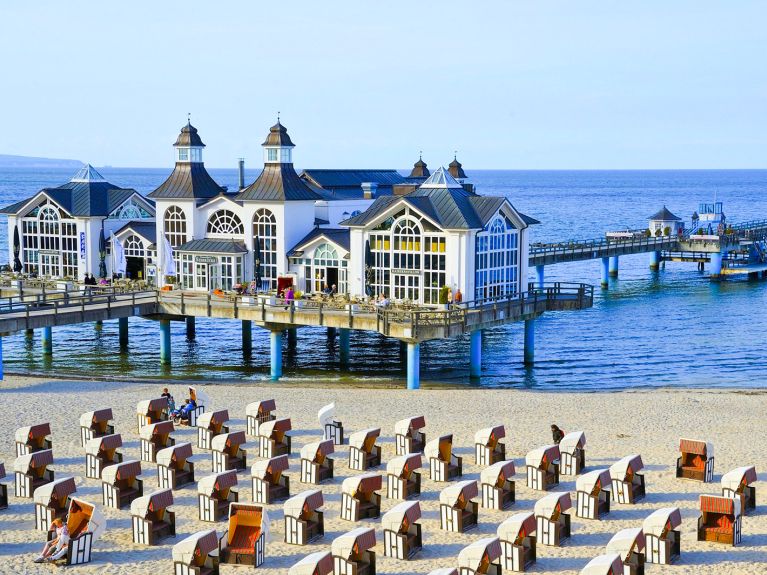
There are many good reasons to visit Germany . European tourists opt for trips to Berlin, Munich or Hamburg because of the exciting culture and lively cities. Business people from all over the world are attracted to Germany as the top destination for international trade fairs. The ever-growing number of visitors have long-since become an important economic factor.
Quick facts
How high is turnover with tourism in Germany? A study published jointly in 2017 by the Federal Ministry of Economic Affairs and the Federal Association of the German Tourism Industry (BTW) entitled Tourism as an Economic Factor in Germany shows that tourism generated an annual turnover of 290 billion euros in 2015. The largest share came from the restaurant and catering industry with around 18 percent. 14 percent of the turnover was contributed by visitors from abroad. They spent around 40 billion euros on their visits to Germany.
With a 3.9 percent share of gross value added, the travel industry is bigger than both mechanical engineering (3.5 percent) and the retail trade (3.3 percent).
How many jobs are dependent on tourism? About three million people in Germany provide services or manufacture products for tourism. That's 6.8 percent of Germany's workforce.
How many international tourists come to Germany? The German National Tourism Board (DZT) counted 84 million overnight stays by international travellers in hotels, guest houses and camp sites in 2017: the eighth record result in a row. The largest percentage of tourists come from Germany's neighbouring country Netherlands (11.2 million), followed by Switzerland (6.7 million) and USA (6.2 million).
What are the forecasts for the travel market in Germany? The DZT expects the annual number of overnight stays by international guests to rise to about 121.5 million by 2030. Most will still be from European countries. In addition, the experts expect more tourists from South America and Southeast Asia.
What is the tourism industry's biggest challenge? Digitalization. Travellers are organizing flights and accommodation via international booking platforms. The 'sharing economy' is thus competing with traditional companies. As a result, German service providers are losing revenue. On the other hand, 'big data' analysis enables the industry to respond more quickly to trends and to be closer to the customer.
Tips, information and facts about travel in Germany: www.germany.travel
© www.deutschland.de
Related content

Tourism industry in Germany
Statistics report about the tourism industry in Germany
This report covers a wide range of statistical data on the tourism industry in Germany. The statistics provide an overview of various industry revenue figures, overnight stays and arrivals, accomodation and transport used, vacation activities and destinations popular among German travelers. The report also includes numbers on tour operators working in Germany.
Download your Report
Table of contents.
- Premium Statistic Revenue in the travel industry in Germany 2005-2022
- Premium Statistic German hospitality industry revenues 2013-2022
- Premium Statistic Hospitality industry revenue by type of business in Germany 2019-2021
- Premium Statistic Tourist arrivals in German travel accommodation in 1992-2023
- Basic Statistic Tourist overnight stays in Germany 1992-2023
Tour operators, travel agencies and industry employees
- Premium Statistic Total revenue of German tour operators 2004-2023
- Premium Statistic Total revenue of German travel agencies 2002-2023
- Premium Statistic Online travel agencies with the best service in Germany 2023
- Premium Statistic Gross annual earnings of travel agency employees in Germany from 2010 to 2022
- Premium Statistic Employees at accommodation establishments in Germany 2021-2023
- Premium Statistic Number of employees in the hospitality industry in Germany 2004-2023
- Premium Statistic Number of tour operator and travel agency employees in Germany 2008-2023
- Premium Statistic Employees at accommodation establishments in Germany 2012-2022
Transport and accommodation
- Premium Statistic Number of passengers in German airports 2001-2023
- Premium Statistic Capacity utilisation of long-distance trains of Deutsche Bahn AG until 2023
- Premium Statistic Cruise passenger numbers from Germany 2004-2023
- Premium Statistic Accommodation revenues in Germany 2012 to 2022
- Premium Statistic Tourist accommodation open in Germany 1992-2023
- Basic Statistic Distribution of hotels in Germany by number of stars 2024
- Premium Statistic Average hotel RevPAR in selected German cities in 2022
- Premium Statistic Open campgrounds in Germany 1992-2020
- Premium Statistic Youth hostels in Germany 1991-2022
- Premium Statistic Guest arrivals in Germany by origin and accommodation type 2023
- Premium Statistic Overnight stays in Germany by accommodation type and origin 2023
Travel destinations and activities
- Premium Statistic Most popular vacation destinations among Germans 2021-2023
- Premium Statistic Most popular vacation activities among Germans in Germany in 2023
- Premium Statistic Popular regions for bike travel in Germany 2023
- Premium Statistic Vacations in Germany by type of planning in 2023
- Premium Statistic Booking channel preferences for vacation travel in Germany 2024
If this report contains a copyright violation , please let us know. Note that you will leave this page when you click the link.
Recommended and recent reports
Recommended statistics.
- Premium Statistic Tourism industry direct contribution as share of GDP Malaysia 2013-2022
- Premium Statistic Contribution of the tourism industry to GDP Indonesia 2016-2021
- Premium Statistic Market size of the tourism sector worldwide 2011-2024
- Premium Statistic Market size of the wellness tourism industry worldwide 2027
- Basic Statistic Tourism industry share of employment in Czechia 2003-2022
Statista report shop
We provide information on industries, companies, consumers, trends, countries, and politics, covering the latest and most important issues in a condensed format.
Mon - Fri, 9am - 6pm (EST)
Mon - Fri, 9am - 5pm (SGT)
Mon - Fri, 10:00am - 6:00pm (JST)
Mon - Fri, 9:30am - 5pm (GMT)
- Immediate access to all reports
- Access to all Premium statistics
- Usage and publication rights
- Publications
- Key Findings
- Interactive data and economy profiles
- Full report

Press release and related contributions
Tourism is back to pre-pandemic levels, but challenges remain.
- High-income economies in Europe and Asia-Pacific continue to lead the World Economic Forum Travel and Tourism Index, with the United States, Spain and Japan topping the rankings again.
- Despite post-pandemic growth, the global tourism sector still faces complex challenges, with recovery varied by region; only marginal overall score improvements since the 2021 edition.
- Developing economies are making strides – who account for 52 out of 71 economies improving since 2019 – but significant investment is needed to bridge gaps and increase market share.
- Read the report here .
New York, USA, 21 May 2024 – International tourist arrivals and the travel and tourism sector’s contribution to global GDP are expected to return to pre-pandemic levels this year, driven by the lifting of COVID-19-related travel restrictions and strong pent-up demand, as per the new World Economic Forum travel and tourism study, released today.
Topping the 2024 list of economies are the United States, Spain, Japan, France and Australia. The Middle East had the highest recovery rates in international tourist arrivals (20% above the 2019 level), while Europe, Africa and the Americas all showed a strong recovery of around 90% in 2023.
These are some of the top findings of the Travel & Tourism Development Index 2024 (TTDI) , a biennial report published in collaboration with the University of Surrey, which analyses the travel and tourism sectors of 119 countries around a range of factors and policies.
“This year marks a turning point for the travel and tourism sector, which we know has the capacity to unlock growth and serve communities through economic and social transformation,” said Francisco Betti, Head of the Global Industries team at the World Economic Forum. “The TTDI offers a forward-looking window into the current and future state of travel and tourism for leaders to navigate the latest trends in this complex sector and sustainably unlock its potential for communities and countries across the world.”
Post-pandemic recovery
The global tourism industry is expected to recover from the lows of the COVID-19 pandemic and surpass the levels seen before the crisis. This is largely being driven by a significant increase in demand worldwide, which has coincided with more available flights, better international openness, and increased interest and investment in natural and cultural attractions.
However, the global recovery has been mixed. While 71 of the 119 ranked economies increased their scores since 2019, the average index score is just 0.7% above pre-pandemic levels.
Although the sector has moved past the shock of the global health crisis, it continues to deal with other external challenges, from growing macroeconomic, geopolitical and environmental risks, to increased scrutiny of its sustainability practices and the impact of new digital technologies, such as big data and artificial intelligence. In addition, labour shortages are ongoing, and air route capacity, capital investment, productivity and other sector supply factors have not kept up with the increase in demand. This imbalance, worsened by global inflation, has increased prices and service issues.
TTDI 2024 highlights Out of the top 30 index scorers in 2024, 26 are high-income economies, 19 are based in Europe, seven are in Asia-Pacific, three are in the Americas and one (the United Arab Emirates) is in the Middle East and North Africa region (MENA). The top 10 countries in the 2024 edition are the United States, Spain, Japan, France, Australia, Germany, the United Kingdom, China, Italy and Switzerland.
The results highlight that high-income economies generally continue to have more favourable conditions for travel and tourism development. This is helped by conducive business environments, dynamic labour markets, open travel policies, strong transport and tourism infrastructure, and well-developed natural, cultural and non-leisure attractions.
Nevertheless, developing countries have seen some of the greatest improvements in recent years. Among the upper-middle-income economies, China has cemented its ranking in the top 10; major emerging travel and tourism destinations of Indonesia, Brazil and Türkiye have joined China in the top quartile of the rankings. More broadly, low- to upper-middle-income economies account for over 70% of countries that have improved their scores since 2019, while MENA and sub-Saharan Africa are among the most improved regions. Saudi Arabia and the UAE are the only high-income economies to rank among the top 10 most improved economies between 2019 and 2024.
Despite these strides, the TTDI warns that significant investment is needed to close gaps in enabling conditions and market share between developing and high-income countries. One possible pathway to help achieve this would be sustainably leveraging natural and cultural assets – which are less correlated with country income level than other factors – and can offer developing economies an opportunity for tourism-led economic development.
“It’s essential to bridge the divide between differing economies’ ability to build a strong environment for their travel and tourism sector to thrive,” said Iis Tussyadiah, Professor and Head of the School of Hospitality and Tourism Management at the University of Surrey. “The sector has big potential to foster prosperity and mitigate global risks, but that potential can only be fully realized through a strategic and inclusive approach.”

Mitigating future global challenges
According to the World Economic Forum’s 2024 Global Risks Report, the travel and tourism sector faces various complex risks , including geopolitical uncertainties, economic fluctuations, inflation and extreme weather. Balancing growth with sustainability also remains a major problem, due to high seasonality, overcrowding, and a likely return of pre-pandemic emissions levels. The report also analyses persistent concerns about equity and inclusion. While the tourism sector offers a major source of relatively high-wage jobs, particularly in developing countries, gender parity remains a major issue for regions such as MENA and South Asia.
Despite these challenges, the sector can play a significant role in addressing them. To achieve this, decision-makers should prioritize actions such as leveraging tourism for nature conservation efforts; investing in skilled, inclusive and resilient workforces; strategically managing visitor behaviour and infrastructure development; encouraging cultural exchange between visitors and local communities; and using the sector to bridge the digital divide, among other policies.
If managed strategically, the travel and tourism sector – which has historically represented 10% of global GDP and employment – has the potential to emerge as a key contributor to the well-being and prosperity of communities worldwide.
About the Travel and Tourism Development Index 2024
The 2024 edition of the TTDI includes several improvements based on newly available data and recently developed indicators on the environmental and social impact of travel and tourism. The changes made to the 2024 Index limit its comparability to the previously published TTDI 2021. This year's report includes recalculated 2019 and 2021 results, using new adjustments. TTDI 2024 reflects the latest available data at the time of collection – end of 2023. The TTDI is part of the Forum’s broader work with industry communities actively working to build a better future enabled by sustainable, inclusive, and resilient industry ecosystems.
Notes to editors
Read the Forum Agenda also in Spanish | Mandarin | Japanese Learn about the Forum’s impact Check out the Forum’s Strategic Intelligence Platform and Transformation Maps Follow the Forum on social media: @wef | Instagram | LinkedIn | Facebook | TikTok | Weibo | Threads | WhatsApp
Watch Forum videos at wef.ch/videos | YouTube Get Forum podcasts at wef.ch/podcasts | YouTube Subscribe to Forum news releases
Privacy settings
Here you will find an overview of the types of cookies used on the website. You can set your consent for each category individually. Further information can be found in the privacy policy .
- Essential Cookies For the use of the website with all functions (e.g. user settings, watch lists, etc.)
- Statistics Statistics Cookies collect information anonymously. This information helps us to understand how our visitors use our website.
- Marketing In order to provide you with the best possible offer in cooperation with our partners, we use marketing tools. For example, in order to use our chatbot, you must activate this setting.
- External contents Required for viewing external media and third-party content. The provider may set cookies for its part. The respective data protection regulations of the provider apply.
- Inspiring Germany
- Cities & Culture
- Nature & Outdoor Activities
- Royal Palaces & Castles
- Experience & Enjoy
- Current highlights
- Sustainable travel
- Barrier-free travel
- Easy language
- Federal states
Good chances for tourism restart in 2022
Dear reader,
As we ease our way into 2022, we say goodbye to a year that has given us plenty to think about. We know that the current situation remains extremely difficult for many of our partners in Germany’s inbound tourism sector and in the international travel industry.
At the moment, it is difficult to predict how the pandemic will develop, both at home and in our many international source markets. The situation for the global travel industry remains challenging as we look forward to the year ahead.
2021 was the second year in a row that coronavirus was the defining influence on international tourism. Hopes for a swift end to the crisis thanks to the development of vaccines were dashed by the emergence of new virus variants. As a result, any optimism that we might see a rapid recovery of travel during the summer months was met by the harsh reality of the third and fourth waves in the autumn.
Where do we go from here? Has all the hard work of the market players been for nothing? When will the many innovative approaches and ideas for making travel safer again finally reap rewards? Or will further waves keep setting us back?
Will 2022 bring a turnaround out of the crisis and into a future that seamlessly builds on the successes of the past?
In early 2021, we were talking about a year of transition. And it was, but on a significantly broader level. While the forecasts at the beginning of the year were still dominated by the question of when which source market and which travel segment would return to pre-crisis levels, we are now talking about profound changes across the industry that will be critical for our future.
Many studies show that the future of tourism will look different from what we might have imagined not that long ago. The main takeaway from two years of the pandemic is that the huge impact that coronavirus has had on international tourism will not be easily overcome.
The long-term objective has already been outlined in the position paper adopted by the German government in April 2019 to provide a framework for the national tourism strategy:
“We strive for quality tourism that works in harmony with nature and culture to create and maintain spaces worth living in, enhances the quality of life of visitors and local residents alike, and has a positive impact on Germany’s image abroad.
We want to establish a digital infrastructure and modern, accessible, reliable and sustainable transport that take the travellers’ needs and the challenges of growing traffic into account.”
Given the significant fall in revenues in the tourism sector, the aim of the restart is to boost the competitiveness not only of Germany as a travel destination but also of its tourism industry, which predominantly consists of small and medium-sized enterprises, and thus increase value creation at a domestic level.
Today, I would like to share with you an assessment of key trends that have emerged and accelerated over the two years of the pandemic: How is the context in which the international tourism industry operates changing? What consequences and what opportunities might arise from this for inbound tourism to Germany in the coming years?
1. International desire to travel
Market research institutes have been studying the impact of the pandemic on travel behaviour for over two years now. The common thread running through the surveys is that the desire to travel has steadily increased worldwide despite repeated waves of coronavirus infections. Polls carried out by IPK International on behalf of the GNTB in 18 of Destination Germany’s source markets certainly confirm this trend.
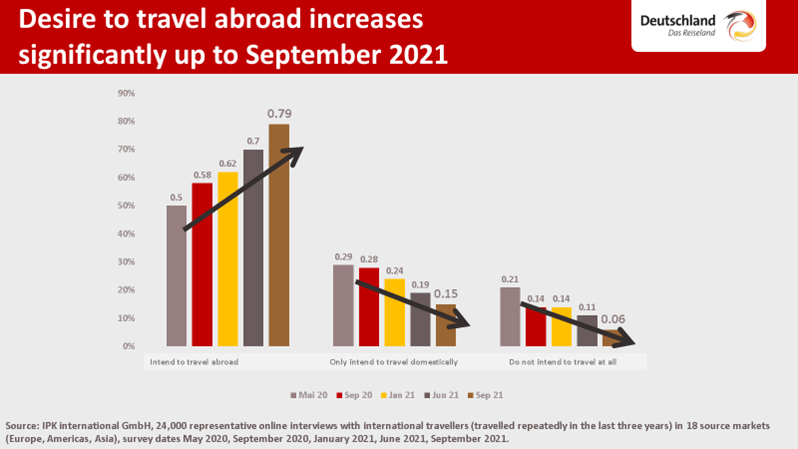
Travel & Tourism in Germany is Trails European Neighbours
The World Travel & Tourism Council’s ( WTTC ) 2024 Economic Impact Research (EIR) has revealed today a much slower recovery of Germany’s Travel & Tourism sector compared to other key European destinations. The data shows domestic tourism is propping up the sector in Germany, but international travel spend in Germany remains below pre-pandemic levels. Unlike many of its neighbours, Germany’s Travel & Tourism sector is yet to recover its GDP contribution, jobs lost during the pandemic, and international visitor spend. According to the global tourism body’s latest research, the sector’s contribution to Germany’s GDP reached just over €453BN in 2023 - €13.5BN below 2019 levels. Employment in Travel & Tourism grew by 5% to reach 6.18MN, but this was still almost 250,000 behind 2019. International visitor spending remained more than 25% behind 2019 last year - €14BN less being spent by international visitors in 2019. Domestic visitor spending however, did fully recover in 2023, exceeding the 2019 level by €2.9BN, evidence that domestic visitors have led the sector’s path toward post-pandemic recovery. Julia Simpson, WTTC President & CEO, said; "While Germany's Travel & Tourism sector has shown signs of resilience, there is a long way to go, and the recent increase of airline passenger taxes will undoubtedly hamper the recovery. “Domestic visitor spending has stayed strong. But taxes will only delay the recovery. The German government should sit down with Travel & Tourism businesses to plan how to stimulate the return of international visitors as it is an important driver of the economy”. What Does This Year Look Like? Although the sector’s overall GDP contribution is forecast to recover in 2024, both jobs and international visitor spending will remain below 2019 levels. WTTC forecasts that Travel & Tourism will contribute almost €469BN to the Germany economy in 2024, an increase of 0.5% from 2019. Jobs are predicted to increase by 160,000 this year, however this will still be 80,000 below pre-pandemic highs. International visitor spending is expected to remain almost 10% behind 2019 with a deficit of €5.1BN in 2024, compared to five years ago. However, domestic visitor spending is projected to continue growing modestly this year, with a 1.2% increase to reach almost €411BN. What Does the Next Decade Look Like? With the right government support, WTTC is forecasting that the sector could grow its annual GDP contribution to nearly €554BN by 2034, representing just over 12% of the German economy, and could potentially employ almost 6.5MN people across the country. This is only possible if the government works with the private sector to ensure Germany remains an attractive destination for international visitors and provides viable long-term employment to German residents. Across the European Union The EU’s Travel & Tourism sector grew by more than 8% in 2023 to reach €1.65TN, whilst jobs reached more than 23.5MN, just past the 2019 level. International spending grew 11.5% to hit €471.5BN – within touching distance of the pre-pandemic period. Domestic visitor spending grew almost 5% to reach €963BN, surpassing the pre-pandemic level. WTTC is forecasting that Travel & Tourism across the region will continue to grow next year with GDP contribution set to reach almost €1.75TN. Jobs are forecast to exceed 24.5MN, international visitor spending is forecast to reach €517BN and domestic visitor spending is expected to pass €982BN. Visit the Economic Impact data at the WTTC Research Hub
- Departments
- European News
- Market Report Germany
- Market Reports
Related articles
Horwath htl report - germany tourism trends & relevant markets 2023 - by christian buer, travel & tourism set to contribute a record $182bn to the canadian economy this year, u.k. inflation falls to 2.3%.
- Travel, Tourism & Hospitality ›
- Leisure Travel
Tourism industry in Germany - statistics & facts
Germany is one of the most visited countries in Europe . Its sixteen states are all distinctive in their own way, differing in terms of population, landscapes, architecture, history and even local dialect. Both for domestic and international arrivals, Germany is well-connected in terms of travel routes and options. This is, after all, the home of the Deutsche Bahn . In general, Germans go on a variety of travels both in and outside of the country. While the trip is the end goal, planning for it is considered a serious activity in itself, with travelers usually devoting time and attention to pre-holiday organizing and booking. In most cases, holiday components taken care of in advance involve booking a package or customized tour, as well as arranging accommodation. Making travel plans has changed enormously because of the internet. The rising use of various online travel websites among consumers, both for research and for bookings, has contributed to losses for traditional travel agencies. The modern traveler can often circumvent an agency entirely and plan the whole trip independently, since virtually any travel activity, tickets and accommodation can be booked online. Travel accommodation is a vital part of the German tourist industry, with the country offering various types of places to stay for tourists and visitors. Online platforms such as Airbnb, where residential property owners can put up their apartments or houses for short-term rent, are also an option for visiting guests, thus introducing additional competition on the travel market. All the same, the travel accommodation industry had been recording encouraging annual growth levels, at least, before the pandemic. As of 2021, total revenue from tourist accommodation in the country amounted to around 20.4 billion euros. This text provides general information. Statista assumes no liability for the information given being complete or correct. Due to varying update cycles, statistics can display more up-to-date data than referenced in the text. Show more - Description Published by Statista Research Department , Mar 15, 2024
Key insights
Detailed statistics
German hospitality industry revenues 2013-2022
Tourist arrivals in German travel accommodation in 1992-2023
Tourist overnight stays in Germany 1992-2023
Editor’s Picks Current statistics on this topic
Ranking of the most popular types of travel in Germany 2018-2021
Travel, Tourism & Hospitality
Travel and tourism's total contribution to GDP in Germany 2019-2022
Number of hotels in Germany 1992-2023
Further recommended statistics
- Premium Statistic Revenue in the travel industry in Germany 2005-2022
- Premium Statistic German hospitality industry revenues 2013-2022
- Premium Statistic Hospitality industry revenue by type of business in Germany 2019-2021
- Premium Statistic Tourist arrivals in German travel accommodation in 1992-2023
- Basic Statistic Tourist overnight stays in Germany 1992-2023
Revenue in the travel industry in Germany 2005-2022
Development of annual revenues in the travel industry in Germany from 2005 to 2022 (in billion euros)
Revenue in the hospitality industry in Germany from 2013 to 2022 (in billion euros)
Hospitality industry revenue by type of business in Germany 2019-2021
Revenue in the hospitality industry in Germany from 2019 to 2021, by type of business (in billion euros)
Number of tourist arrivals in travel accommodation in Germany from 1992 to 2023 (in millions)
Number of overnight stays at travel accommodation in Germany from 1992 to 2023 (in millions)
Tour operators, travel agencies and industry employees
- Premium Statistic Total revenue of German tour operators 2004-2023
- Premium Statistic Total revenue of German travel agencies 2002-2023
- Premium Statistic Online travel agencies with the best service in Germany 2023
- Premium Statistic Gross annual earnings of travel agency employees in Germany from 2010 to 2022
- Premium Statistic Employees at accommodation establishments in Germany 2021-2023
- Premium Statistic Number of employees in the hospitality industry in Germany 2004-2023
- Premium Statistic Number of tour operator and travel agency employees in Germany 2008-2023
- Premium Statistic Employees at accommodation establishments in Germany 2012-2022
Total revenue of German tour operators 2004-2023
Total revenue of tour operators in Germany from 2004 to 2023 (in billion euros)
Total revenue of German travel agencies 2002-2023
Total revenue of travel agencies in Germany from 2005 to 2023 (in billion euros)
Online travel agencies with the best service in Germany 2023
Online travel agencies in Germany in 2023, ranked by best service
Gross annual earnings of travel agency employees in Germany from 2010 to 2022
Average annual gross earnings of full-time travel agency and other travel booking service employees in Germany from 2010 to 2022 (in euros)
Employees at accommodation establishments in Germany 2021-2023
Number of employees at tourist accommodation in Germany from 2021 to 2023, by type of establishment
Number of employees in the hospitality industry in Germany 2004-2023
Number of employees subject to social security payments in the hospitality industry in Germany from 2004 to 2023
Number of tour operator and travel agency employees in Germany 2008-2023
Number of employees subject to social security deductions in the tourism industry in Germany from 2008 to 2023
Employees at accommodation establishments in Germany 2012-2022
Number of employees liable to social insurance contributions at accommodation establishments in Germany from 2012 to 2022
Transport and accommodation
- Premium Statistic Number of passengers in German airports 2001-2023
- Premium Statistic Capacity utilisation of long-distance trains of Deutsche Bahn AG until 2023
- Premium Statistic Cruise passenger numbers from Germany 2004-2023
- Premium Statistic Accommodation revenues in Germany 2012 to 2022
- Premium Statistic Tourist accommodation open in Germany 1992-2023
- Basic Statistic Distribution of hotels in Germany by number of stars 2024
- Premium Statistic Average hotel RevPAR in selected German cities in 2022
- Premium Statistic Open campgrounds in Germany 1992-2020
- Premium Statistic Youth hostels in Germany 1991-2022
- Premium Statistic Guest arrivals in Germany by origin and accommodation type 2023
- Premium Statistic Overnight stays in Germany by accommodation type and origin 2023
Number of passengers in German airports 2001-2023
Number of passengers in German airports from 2001 to 2023 (in millions)
Capacity utilisation of long-distance trains of Deutsche Bahn AG until 2023
Capacity utilisation of long-distance trains of the Deutsche Bahn AG in Germany from 2006 to 2023
Cruise passenger numbers from Germany 2004-2023
Number of cruise passengers* from Germany from 2004 to 2023 (in 1,000)
Accommodation revenues in Germany 2012 to 2022
Revenue of the travel accommodation industry in Germany from 2012 to 2022 (in billion euros)
Tourist accommodation open in Germany 1992-2023
Number of open tourist accommodation establishments in Germany from 1992 to 2023
Distribution of hotels in Germany by number of stars 2024
Distribution of hotels in Germany as of January 2024, by number of stars
Average hotel RevPAR in selected German cities in 2022
Average revenue per available room (RevPAR*) in hotels in selected German cities in 2022 (in euros)
Open campgrounds in Germany 1992-2020
Number of open campgrounds in Germany from 1992 to 2020
Youth hostels in Germany 1991-2022
Number of youth hostels in Germany from 1991 to 2022
Guest arrivals in Germany by origin and accommodation type 2023
Guest arrivals in Germany in 2023, by origin and accommodation type (in millions)
Overnight stays in Germany by accommodation type and origin 2023
Number of overnight stays in Germany by accommodation type and origin in 2023 (in millions)
Travel destinations and activities
- Premium Statistic Most popular vacation destinations among Germans 2021-2023
- Premium Statistic Most popular vacation activities among Germans in Germany in 2023
- Premium Statistic Popular regions for bike travel in Germany 2023
- Premium Statistic Vacations in Germany by type of planning in 2023
- Premium Statistic Booking channel preferences for vacation travel in Germany 2024
Most popular vacation destinations among Germans 2021-2023
Leading vacation destinations among Germans from 2021 to 2023
Most popular vacation activities among Germans in Germany in 2023
Most popular activities among Germans during vacation in Germany in 2023
Popular regions for bike travel in Germany 2023
Most popular regions for bike travel in Germany in 2023
Vacations in Germany by type of planning in 2023
Vacation trips in Germany in 2023, by type of planning
Booking channel preferences for vacation travel in Germany 2024
Preferred channels used for booking vacation trips in Germany in 2023/24
Further reports
Get the best reports to understand your industry.
Mon - Fri, 9am - 6pm (EST)
Mon - Fri, 9am - 5pm (SGT)
Mon - Fri, 10:00am - 6:00pm (JST)
Mon - Fri, 9:30am - 5pm (GMT)

- OPEN DATA GERMANY
OPEN DATA IN TOURISM
An information offer of the German National Tourist Board.
By loading the video, you agree to YouTube's privacy policy Learn more
Always unblock YouTube
The Open Data Project
Open Data is a key solution to the technological and commercial changes currently shaping the global tourism industry. The German National Tourist Board, the state marketing organisations and the Magic Cities have therefore decided to make their data generally available in the form of “Open Data” as part of a joint project.
OPEN DATA PROJECT
What exactly is the Open Data project? Which stakeholders are participating in the project group and what are the goals and next steps in the course of the Open Data project of the German National Tourist Board?
How can Open Data be integrated within the marketing strategy and the organisation of DMOs and what are the advantages and disadvantages of accompanying changes in systems and processes?
What does the term “headless web” mean and what are resulting changes for destinations? What does Open Data have to do with artificial intelligence and how important is the structuring of data?
“The possibilities of digital technologies – in this case above all artificial intelligence -, enormous growth in potential source markets of worldwide tourism, concentration and globalisation processes in the international travel industry and changing consumer behaviour are closely interlinked. With its national and international network, the GNTB is predetermined to coordinate this complex process in the open data project together with all stakeholders.”
“Especially in metropolitan areas, there are countless different data which are of concern to tourists if they want to experience a successful stay. We are helping to develop practical structures for the Open Data project with our know-how.
“An efficient Open Data project must involve all participants in the tourism value chain, from federal state over local regions to the individual tourism POIs. Destination Marketing Organizations (DMOs) must increasingly ensure that their knowledge in the form of open data can be used by all market participants on all communication and distribution channels in the future.”
“I think you’ll be surprised at the added value and benefits you’ll get from it in the years to come…It’s a great project.”
Facts about the Open Data project
What is the open data project.
With the Open Data project, the prerequisite for the digital transformation in the direction of artificial intelligence is created in order to make Germany competitive as a tourism location. The core of the project is the development of a knowledge graph.
Who is working on the Open Data project?
The GNTB is working on the Open Data project together with the 16 state tourism organizations (LTOs) and the Magic Cities .
When will the Knowledge Graph go live?
The Knowledge Graph has been live since June 2023.
Recent posts from our blog
With this blog we would like to share our knowledge and support various tourism organisations in their work. Our experts give insight into the Open Data / Knowledge Graph topic and provide tips & tricks in different technical papers.

Intelligent language applications in tourism
How do intelligent speech applications work? Intelligent speech recognition and artificial intelligence (AI) offer a variety of opportunities in the tourism industry to improve customer service, enable personalized experiences, and increase operational efficiencies. The use of Open Data, i.e. [...]
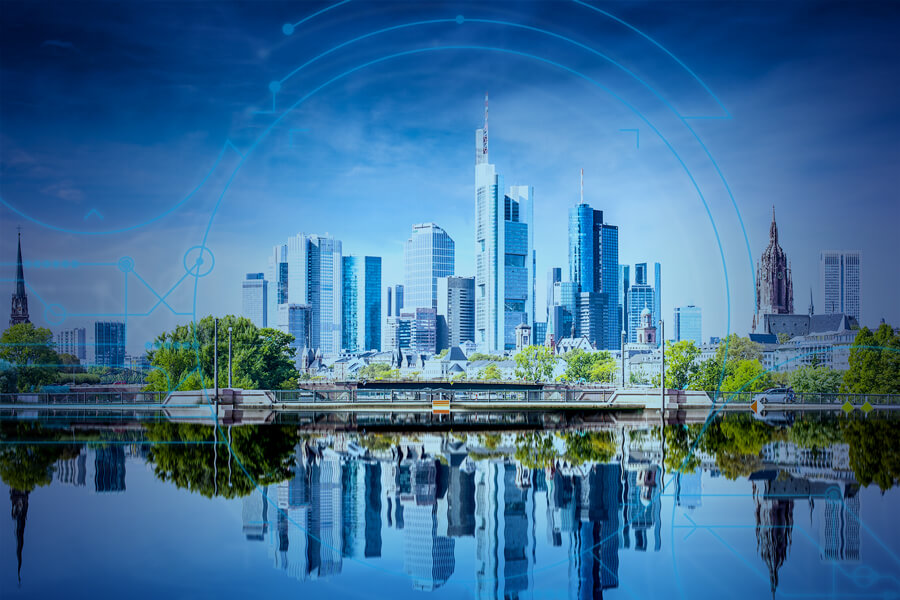
The future of data management for inbound tourism to Germany
I am happy to announce that the German tourism industry’s biggest ever data infrastructure project is now live! Today, in conjunction with all project participants, we finally brought the GNTB Knowledge Graph on stream. Over the past three years, [...]

Access for data retrieval
Request access to data retrievalFrom now on, data users and interested parties can easily and conveniently request access to the application interface (API) for the Knowledge Graph.Three steps to data utilizationSend e-mail to [email protected] indicating company, e-mail address and name [...]
Publications
Magazine artificial intelligence.
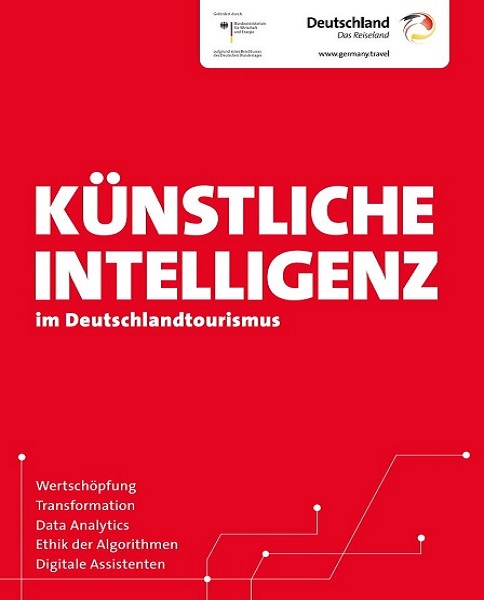
On the basis of expert contributions, the AI Magazine in German Tourism analyzes opportunities and challenges arising from this forward-looking technology for tourism.
Handbook Open Data

On a scientific basis, the Open Data Manual in Germany’s Tourism Industry consicesly summarises how to shape the future of the digital destination in a comprehensible form.
Questions or suggestions?
Contact us, we are looking forward to your message
5 Countries With Booming Tourism Industries
Rashaad Jorden , Skift
May 22nd, 2024 at 4:12 AM EDT
Today's podcast looks at emergent tourism destinations, Four Seasons' remote gamble, and an airport slot battle in Washington, D.C.
Rashaad Jorden

Skift Daily Briefing Podcast
Listen to the day’s top travel stories in under four minutes every weekday.
Good morning from Skift. It’s Wednesday, May 22. Here’s what you need to know about the business of travel today.
🎧 Subscribe
Apple Podcasts | Spotify | Overcast | Google Podcasts | Amazon Podcasts
Episode Notes
The World Economic Forum recently released its 2024 Travel & Tourism Index. Global Tourism Reporter Dawit Habtemariam and Senior Hospitality Editor Sean O’Neill profiles five countries the organization named as among the most-improved economies for enabling travel and tourism development since 2019.
Habtemariam and O’Neill highlight Albania, Indonesia, Egypt, Tanzania, and El Salvador. In particular, Albania has seen a 141% increase in daily flight traffic since 2019. Meanwhile, Indonesian authorities boosted domestic tourism last year by launching a program that gave financial support to more than 170 festivals and cultural events.
Habtemariam and O’Neill note that the World Economic Forum has recommended that tourism leaders develop strategies to combat challenges such as labor shortages and climate change.
Next, the Four Seasons is betting that luxury travelers will be willing to make a long journey to the remote Pacific island of Palau, writes Columnist Colin Nagy.
The Four Seasons is planning to open a permanent hotel development in Palau in the next few years. Armando Kraenzlin, a longtime Four Seasons general manager, described Palau as “one of the last true remaining frontiers.” The Great Barrier Reef Foundation reported that Palau is the only country to have protected 80% of its offshore marine environment.
In addition, Nagy notes the Four Seasons has relocated its liveaboard ship, the Explorer, from the Maldives to Palau, as well as moved some diving instructors and marine biologists.
Finally, airlines are scrambling to acquire the five new slots for long-distance flights departing from Reagan National Airport, writes Airlines Reporter Meghna Maharishi.
President Joe Biden recently signed a bill with a provision approving the new slots. Maharishi reports the slots have to be allocated within 60 days of the act becoming law.
American Airlines had already announced a partnership with San Antonio International Airport to launch flights between the city and Reagan National. In addition, Alaska Airlines plans to apply for flights between San Diego and the airport. San Diego is currently the largest market without nonstop service to Reagan National.
Presenter/Producer: Jose Marmolejos
The Daily Newsletter
Our daily coverage of the global travel industry. Written by editors and analysts from across Skift’s brands.
Have a confidential tip for Skift? Get in touch
Tags: egypt , el salvador , four seasons , indonesia , skift podcast
Photo credit: A cyclist ridging through Tirana, Albania. Alexandr Bormotin / Unsplash

GOBankingRates
10 Travel Cities That Are Becoming Too Expensive To Visit
Posted: May 24, 2024 | Last updated: May 24, 2024

In December 2023, Euromonitor Internation revealed the Top 100 City Destinations of the year, a period in which global tourism and the travel industry made a strong recovery after the pandemic. Not surprisingly, New York City was among the most popular destinations, ranking eighth, the highest placing of an American city.
Check Out: 3 Places To Travel That Are Like Hawaii but Way Cheaper
Read Next: 5 Unusual Ways To Make Extra Money (That Actually Work)
NYC also ranked eighth in GOBankingRates' 28 Most Expensive Tourist Destinations in the US study issued in June 2023. However, the city's strict crackdown on short-term rental laws and construction permits might move "The City That Never Sleeps" closer to #1 in short order.
It's not alone. According to Nadejda Popova, Senior Manager at Euromonitor International, "Some destinations are imposing restrictions, steep taxation or reduction of hotel capacity to help limit the influx of tourists and preserve cultural heritage, while others embrace dispersion strategies that promote alternative or off-the-beaten-path destinations."
Of the 10 most-visited large cities in the world, New York City is already the priciest to visit, according to R u stic Pathways . The site, which caters to student travelers and those looking for study abroad programs, analyzed the average cost of accommodation, transportation and food and drinks from multiple travel providers and found that a one-night stay in NYC will cost you $687 (not including airfare, train or bus fare to the destination).
Bigger cities and capitals offer tourists amazing experiences, but careful budgeting is necessary to travel to many places now. Going off the beaten track or choosing a cheap vacation spot might help, but if you've got your heart set on visiting a popular tourist destination, prepare in advance by saving up and researching affordable lodging and deals on food and beverages, entertainment and activities.
Here are the ten priciest popular large city tourist destinations, according to Rustic Pathways.
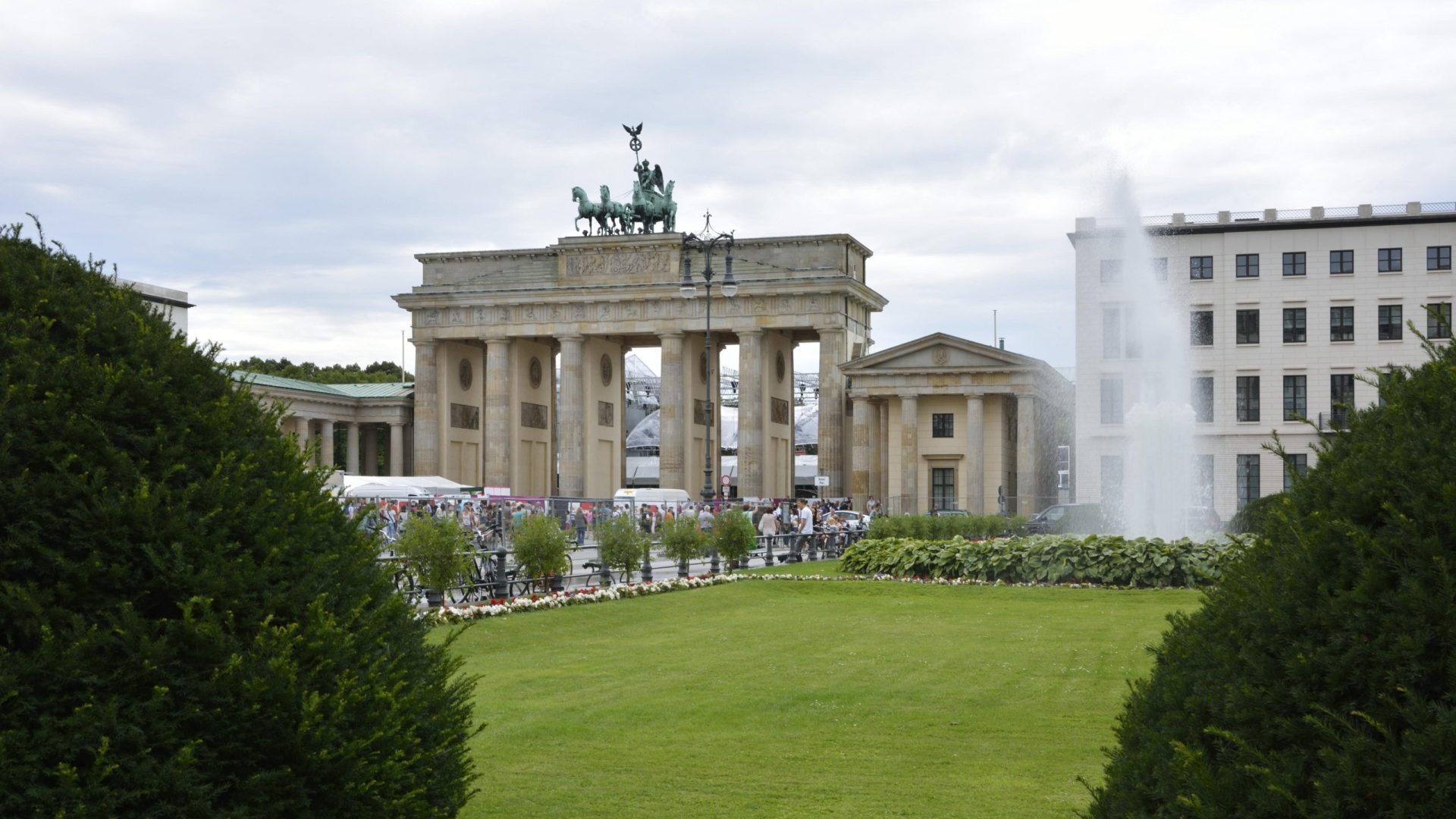
10. Berlin, Germany -- $266/one-night visit
- Hotel: $138
- Transportation (not including airfare): $19
- Entertainment: $24
- Alcohol: $27
- Tips and Handouts: $2
Learn More: Barbara Corcoran: Here's Why I Never Fly First Class
Trending Now: 7 Vacation Destinations To Avoid on a Retirement Budget
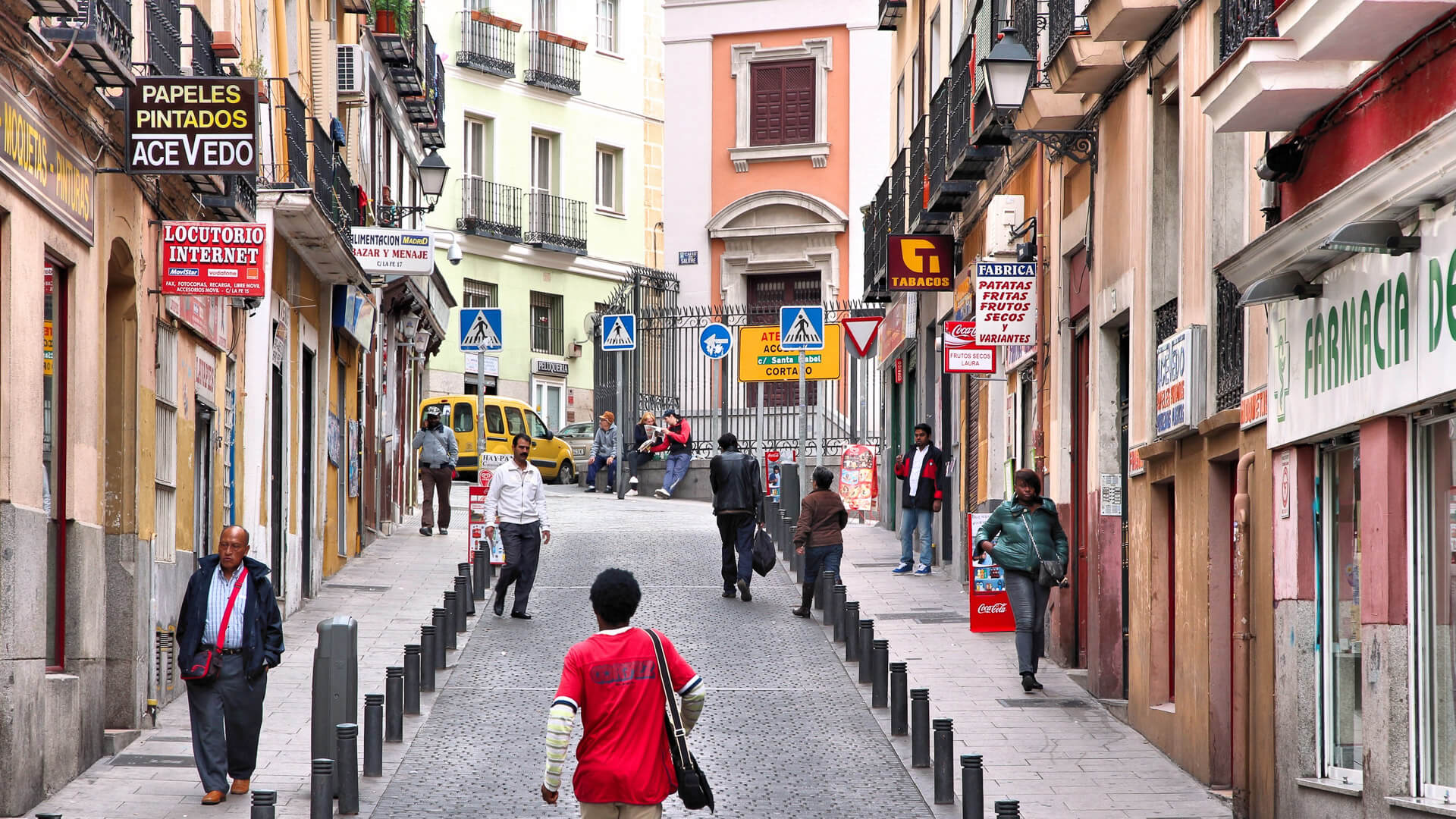
9. Madrid, Spain -- $298/one-night visit
- Hotel: $167
- Transportation (not including airfare): $20
- Entertainment: $37
- Alcohol: $32
- Tips and Handouts: $5
Learn Next: 10 Best US Vacation Destinations for Retirees on a Budget

8. Tokyo, Japan -- $338/one-night visit
- Hotel: $155
- Transportation (not including airfare): $18
- Entertainment: $69
- Alcohol: $50
- Tips and Handouts: $8

7. Barcelona, Spain -- $340/one-night visit
- Hotel: $208
- Transportation (not including airfare): $21
- Entertainment: $36
- Alcohol: $28
- Tips and Handouts: $12
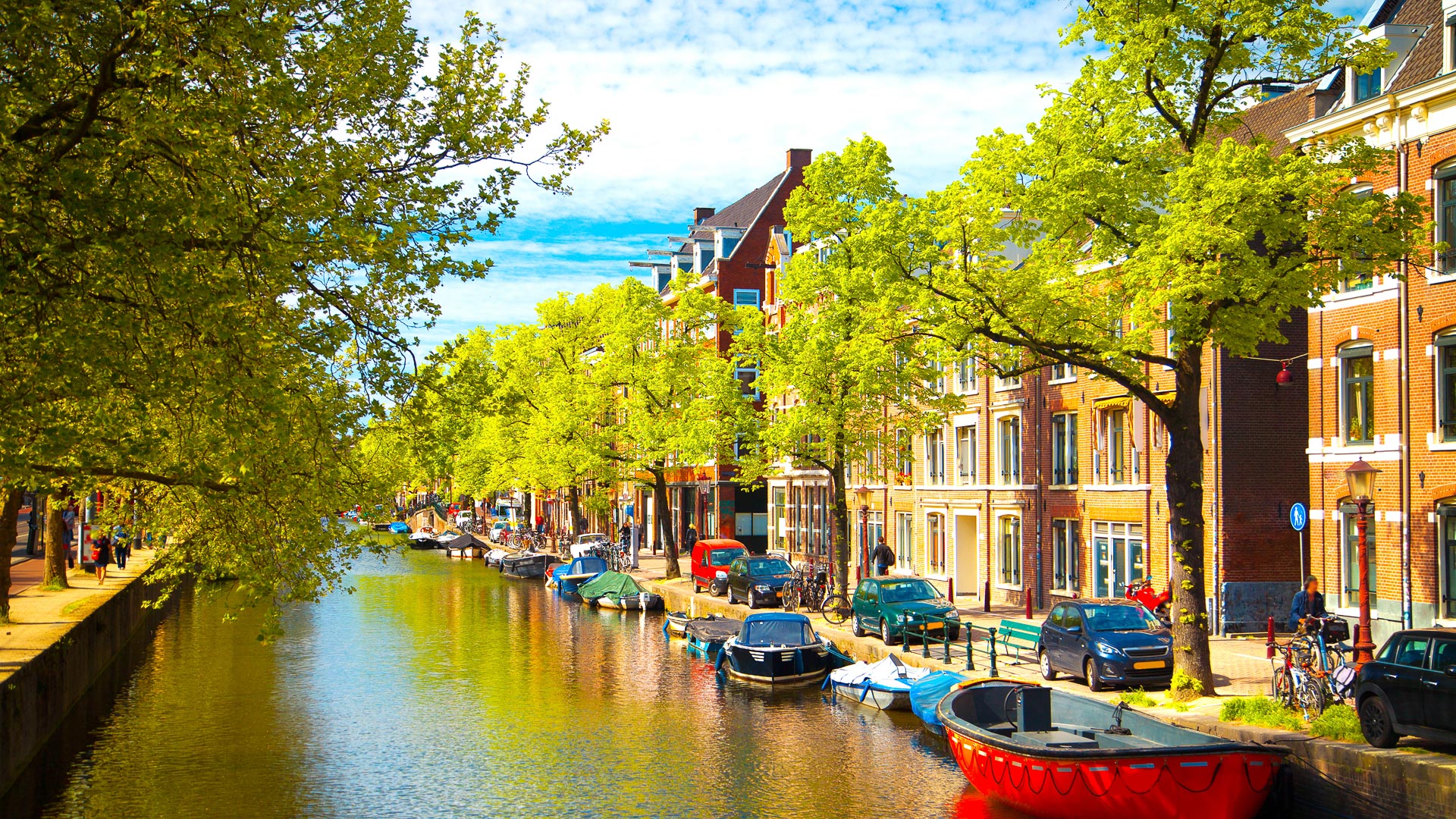
6. Amsterdam, Netherlands -- $374/one-night visit
- Hotel: $221
- Entertainment: $40
- Alcohol: $38
- Tips and Handouts: $7
Check This: Dave Ramsey: 7 Vacation Splurges That are a Waste of Money
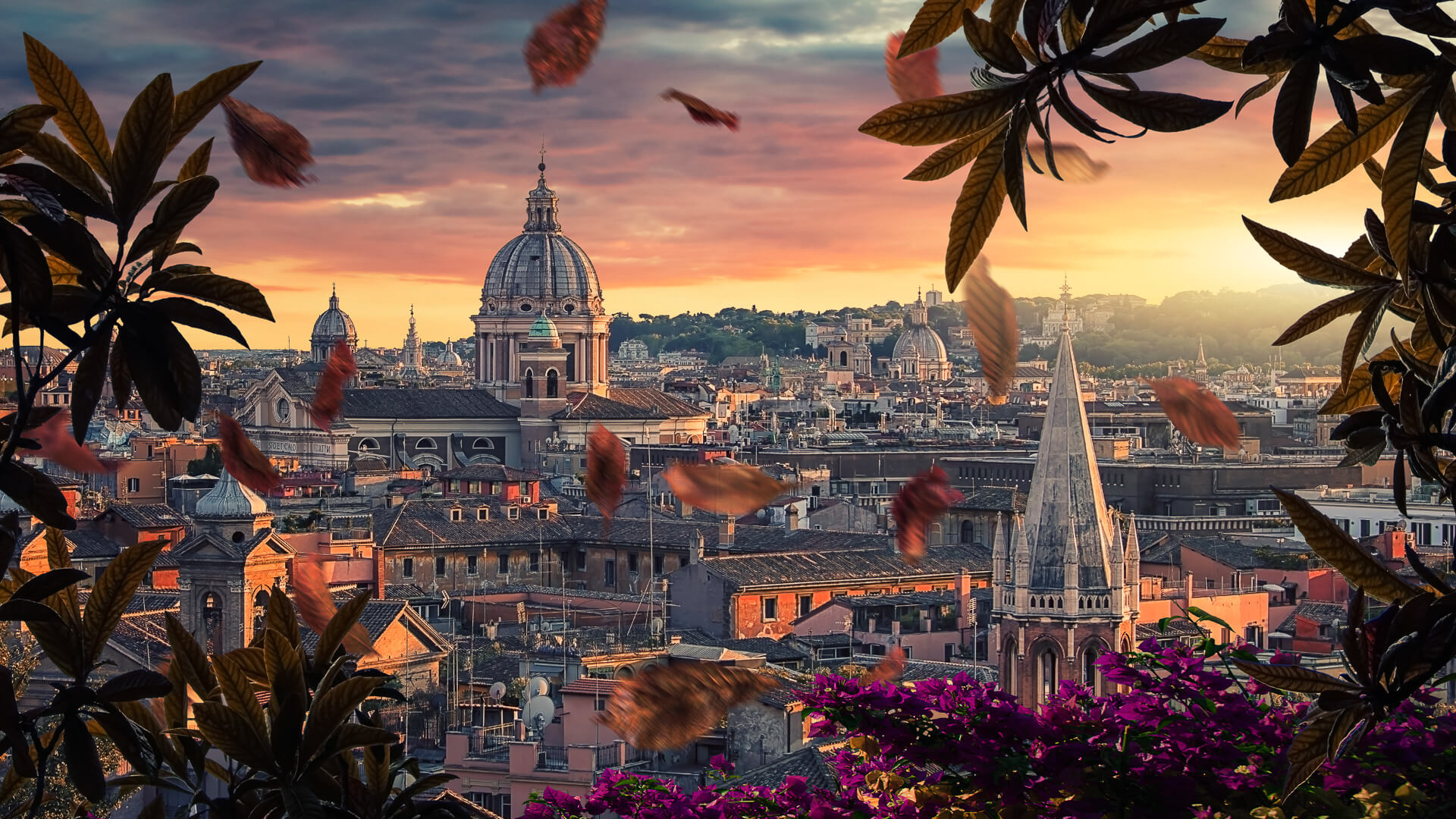
5. Rome, Italy -- $383/one-night visit
- Hotel: $192
- Transportation (not including airfare): $23
- Entertainment: $39
- Alcohol: $30
- Tips and Handouts: $48
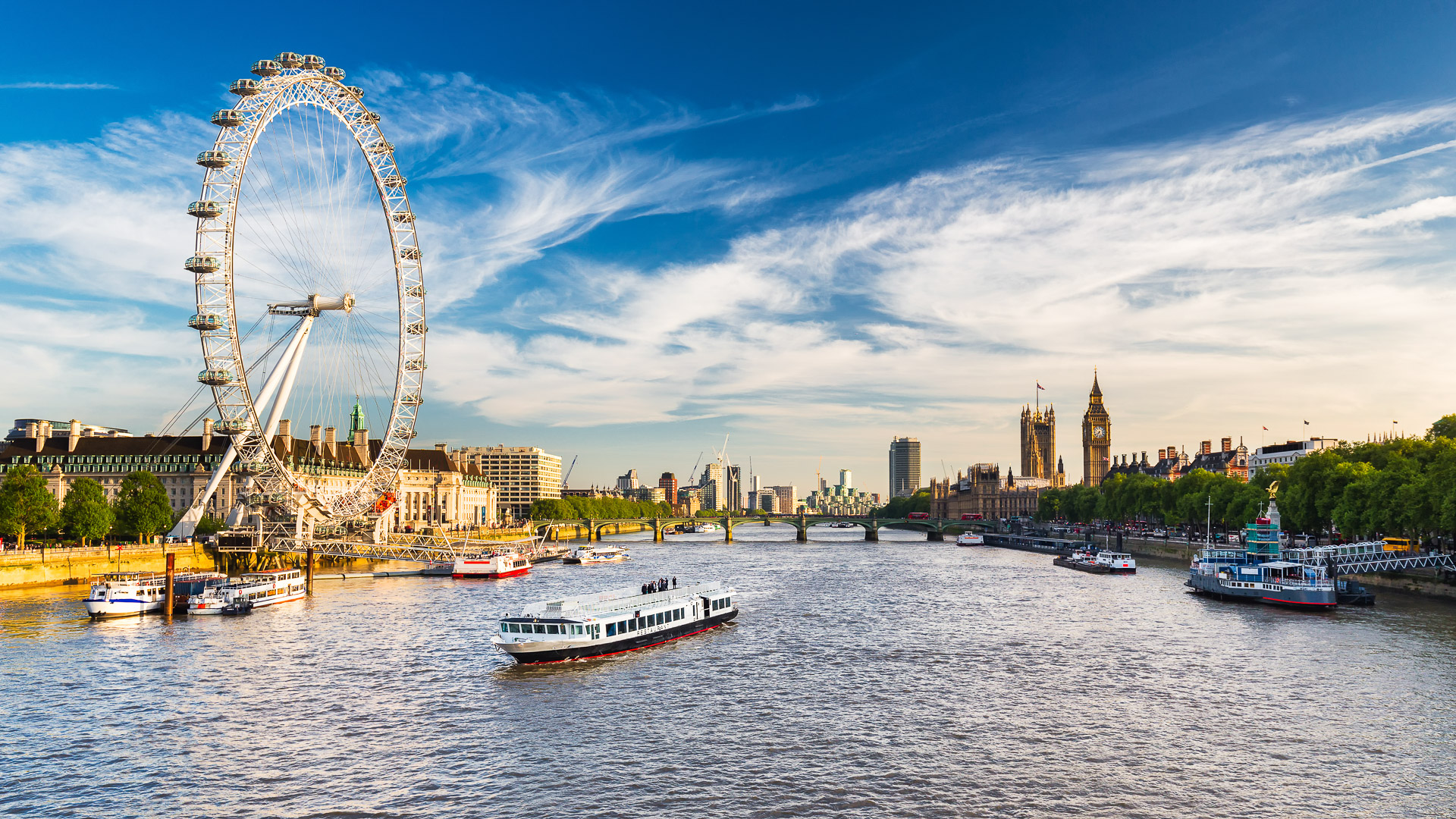
4. London, England -- $461/one-night visit
- Hotel: $310
- Transportation (not including airfare): $32
- Entertainment: $41
- Alcohol: $29
- Tips and Handouts: $6

3. Dubai, United Arab Emirates -- $465/one-night visit
- Hotel: $340
- Transportation (not including airfare): $13
- Entertainment: $19
- Alcohol: $34
- Tips and Handouts: $3
Read This: 11 Expensive Vacation Destinations That Will Be Cheaper in 2024

2. Paris, France -- $557/one-night visit
- Hotel: $327
- Entertainment: $84
- Alcohol: $40
- Tips and Handouts: $38
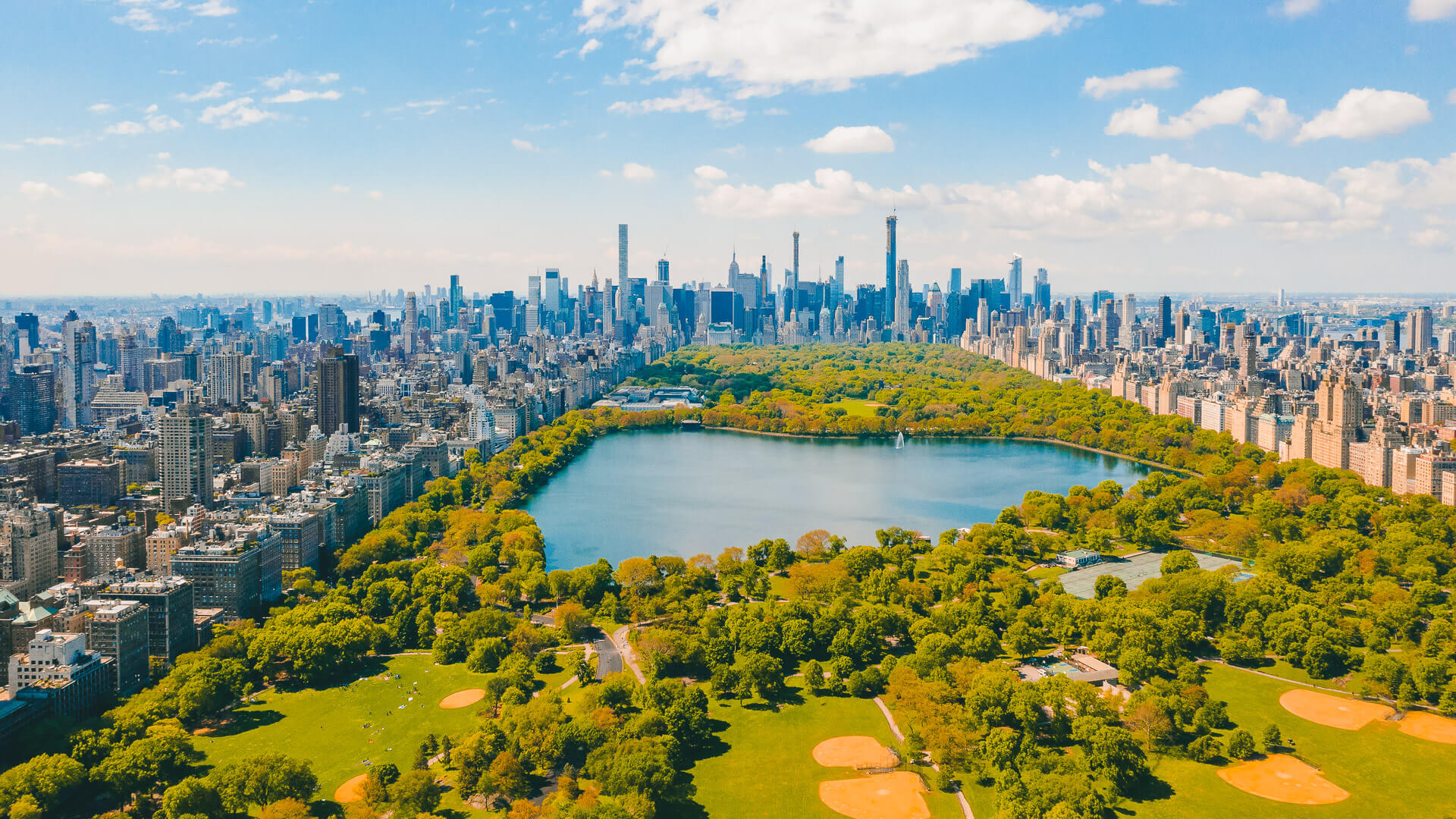
1. New York City, USA -- $687/one-night visit
- Hotel: $350
- Transportation (not including airfare): $49
- Entertainment: $180
- Alcohol: $44
- Tips and Handouts: $14
More From GOBankingRates
- 10 Cars That Outlast the Average Vehicle
- Costco's 10 Best Clothing Deals for Your Money in May 2024
- I've Secretly Put Us in Serious Debt: How To Break the News to Your Spouse
- This is The Single Most Overlooked Tool for Becoming Debt-Free
More for You
Expert demonstrates genius tip to get rid of empty medication bottles: ‘Do not recycle these curbside’
Here’s How Often You Should Really Shower
Taylor Swift fixes wardrobe malfunction during 'Eras Tour'
We may have found a new telltale sign of alien life
Watermelon Rinds: The Secret Superfood We've Been Throwing Out
I've flipped burgers and hauled packages, but I didn't realize how bad hourly service jobs were until I got a 9-to-5 office job
Look Younger With 18 Hairstyles That Make Women Over 60 Look 40
This Is What a TSA Agent First Notices About You
Our 20 Most Popular Dessert Recipes of All Time
9 of the wildest urban legends in Disney history – and which ones are true
The ripeness of a banana could affect your health
Honda Filmed This Fantastic Documentary Back In 1962 And You Need To See It
The Only Major Actors Still Alive From All In The Family
Americans are finally catching on to Costco's tricks — here are 15 to watch out for so you don't get fleeced on your next trip
This 3-Ingredient Dinner Is My Weeknight Hero
Dog Thinks He's the Fastest at the Park, Then a 'Malligator' Turns Up
5 Foods That Are Surprisingly Healthy
Tesla Cybertruck teardown videos show what it's like to actually own one
Popular discount retailer shares bankruptcy news, closes stores
5 Of The Coolest Looking 1000cc Motorcycles Ever Made

IMAGES
COMMENTS
Revenue in the hospitality industry in Germany from 2019 to 2021, by type of business (in billion euros) Premium Statistic Tourist arrivals in German travel accommodation in 1992-2023
The recovery of tourism in Germany has been moderate. In 2021 there were 96.8 million tourists (domestic and international), 1.3% lower than in 2020. Of these, 11.7 million were international tourists, and 85.1 million were domestic tourists. International tourists remained 70.5% below 2019 levels, and domestic tourists remained 43.8% down.
HOLIDAYS. 65 %. 15 %. Sources: GNTB/WTM 2022, IPK 2023, preliminary figures, Deviations from 100 % are due to rounding. Promotable business trips to Germany from Overseas have the largest market share in 2022. 33 % traditional business trips. Total volume of business trips from Overseas in 2022: 1.8 million trips.
The tourism industry is a significant contributor to the German economy. In 2019, Germany welcomed over 90 million international and domestic visitors, who spent a total of 293 billion euros. The industry also generates over 3 million jobs in the country.
The tourism sector employs more than 175,000 people full-time and brings in revenue of €9.3 billion, making the tourism industry a major economic force in the Hamburg Metropolitan Region. Hamburg has one of the fastest-growing tourism industries in Germany.
Sources: *GNTB/WTM 2019, IPK 2020; **Quality Monitor survey, tourism in Germany, May 2015-Apr 2020, multiple answers permitted; ***Quality Monitor survey, tourism in Germany, scale: 1 = delighted to Source: Federal Statistical Office 2021. 6 = disappointed, May 2015-April 2020. Germany's major cities
2.2-1: Tourist expenses of residents in Germany by type of trip, 2019 ..... 11 2.2-2: Tourist expenses of residents in Germany ... Federal Statistical Office | Current data on the tourism industry - Short Version, Economic meaning and sustainability | 2021. 4. List of Abbreviations.
The tourism industry in Germany was heavily affected by the Covid-19 crisis also in 2021. However, it recovered slightly compared with 2020, the first year of the pandemic. Based on provisional results, the Federal Statistical Office (Destatis) reports that accommodation establishments in Germany recorded 310.3 million overnight stays of visitors last year. This was an increase in overnight ...
An important part of the Centre's work is the Tourism 2030 project, which brings together various industry players and academics to look at long-term scenarios and prospects for tourism in Germany. The Centre of Excellence has an Advisory Board and a Supervisory Body whose membership includes representatives of national tourism associations ...
In January 2023, accommodation establishments in Germany recorded 24.0 million overnight stays of visitors from Germany and abroad. Based on provisional results, the Federal Statistical Office (Destatis) reports that this was a 48.3% increase on January 2022, when there had still been some closures and restrictions due to the Covid-19 pandemic. The number of overnight stays was 10.5% lower ...
Germany's tourism industry is showing signs of shaking off the legacy of the Covid-19 pandemic, bolstered by a strong revival in domestic travel.. Overnight stays surged by 12.4% in April ...
German tourism industry. Germany has the largest outbound tourist trade in the world, with Germans spending about €80 billion annually to travel abroad (the United States is second), in spite of Germany being fourth in world in GDP and fourteenth in population. Germany also has the eighth largest inbound tourist trade, with receipts of around ...
Tourism Industry in Germany. The tourism industry is an important sector of the German economy and has been growing steadily in recent years. According to statistics from the German National Tourist Board, more than 37 million visitors travelled to Germany in 2019, generating almost 90 billion euros in revenue. ...
Global tourism, and thus Germany's inbound tourism industry, faced new challenges in 2022. The pandemic-related restrictions on travel were grad-ually lifted in many countries, and this new freedom to travel coincided with a great desire among consumers to make up for cancelled or delayed holidays.
How high is turnover with tourism in Germany? A study published jointly in 2017 by the Federal Ministry of Economic Affairs and the Federal Association of the German Tourism Industry (BTW) entitled Tourism as an Economic Factor in Germany shows that tourism generated an annual turnover of 290 billion euros in 2015. The largest share came from the restaurant and catering industry with around 18 ...
A 2021 survey by the German Tourism Association (DTV) found that 84% of businesses said the pandemic had spurred digital transformation in the industry. Tourists visiting Germany's East Frisian ...
Basic Statistic Tourist overnight stays in Germany 1992-2023 Tour operators, travel agencies and industry employees 8
The establishment of the Open Data Tourism Alliance (ODTA) 2021 turns the German tourism industry's project Open Data Germany into a true pan-European project. In the successor organization of the DACH-KG, National Tourist Boards and regional tourism organizations from Germany, Austria, Switzerland, Italy and Sweden exchange information in ...
09/09/2021 September 9, 2021. This summer's devastating floods in western Germany hit some of the country's most-popular holiday spots. Experts say the sector must change quickly or pay the price.
New York, USA, 21 May 2024 - International tourist arrivals and the travel and tourism sector's contribution to global GDP are expected to return to pre-pandemic levels this year, driven by the lifting of COVID-19-related travel restrictions and strong pent-up demand, as per the new World Economic Forum travel and tourism study, released ...
Many workers have now turned their backs on tourism jobs, preferring, for example, to work in the automotive industry or in retail.In October 2021, Germany's Federal Employment Agency showed a ...
The WTTC forecasts that Germany's travel and tourism industry will contribute almost €469 billion ($508 billion) to the German economy this year. That's a meager increase of just 0.5 percent from 2019. Additionally, employment levels are expected to increase by 160,000 this year—a figure that's 80,000 below pre-pandemic highs.
As we ease our way into 2022, we say goodbye to a year that has given us plenty to think about. We know that the current situation remains extremely difficult for many of our partners in Germany's inbound tourism sector and in the international travel industry. At the moment, it is difficult to predict how the pandemic will develop, both at ...
Unlike many of its neighbours, Germany's Travel & Tourism sector is yet to recover its GDP contribution, jobs lost during the pandemic, and international visitor spend. According to the global ...
Number of employees subject to social security deductions in the tourism industry in Germany from 2008 to 2023. Premium Statistic Employees at accommodation establishments in Germany 2012-2022 Employees at accommodation establishments in Germany 2012-2022. Number of employees liable to social insurance contributions at accommodation ...
The Open Data Project. Open Data is a key solution to the technological and commercial changes currently shaping the global tourism industry. The German National Tourist Board, the state marketing organisations and the Magic Cities have therefore decided to make their data generally available in the form of "Open Data" as part of a joint ...
Email*. Habtemariam and O'Neill highlight Albania, Indonesia, Egypt, Tanzania, and El Salvador. In particular, Albania has seen a 141% increase in daily flight traffic since 2019. Meanwhile ...
Here are the ten priciest popular large city tourist destinations, according to Rustic Pathways. 10. Berlin, Germany -- $266/one-night visit. 9. Madrid, Spain -- $298/one-night visit. Learn Next ...